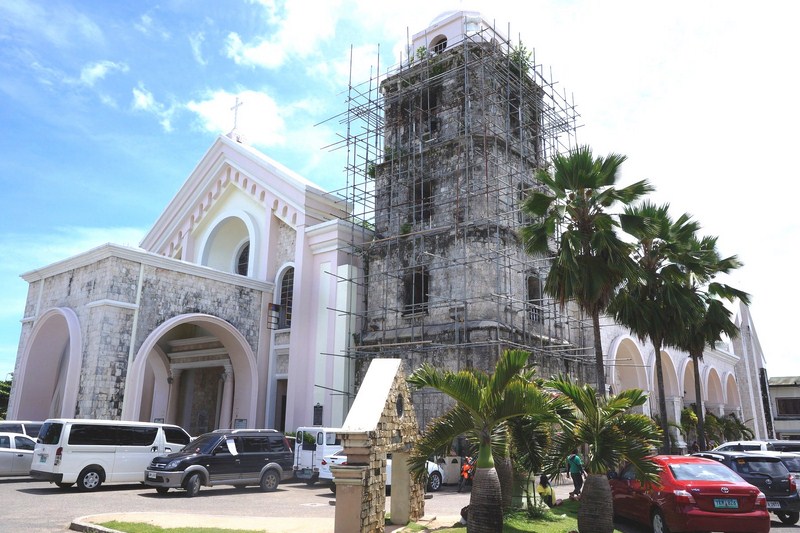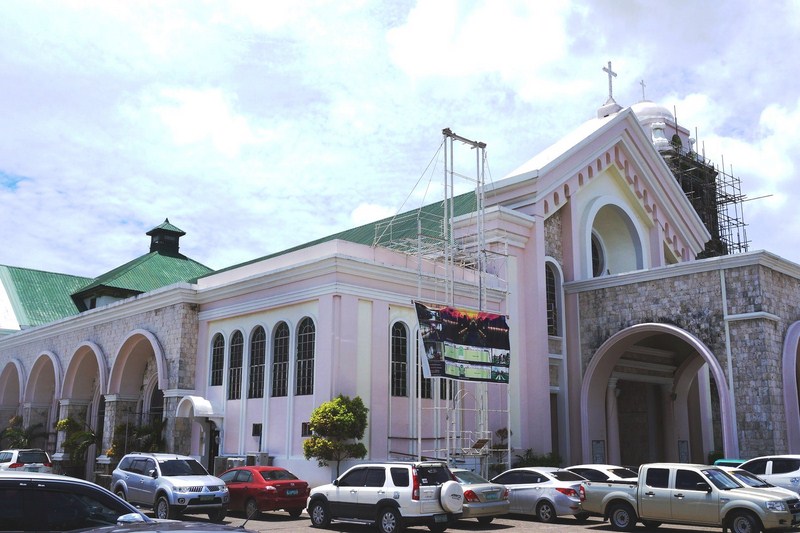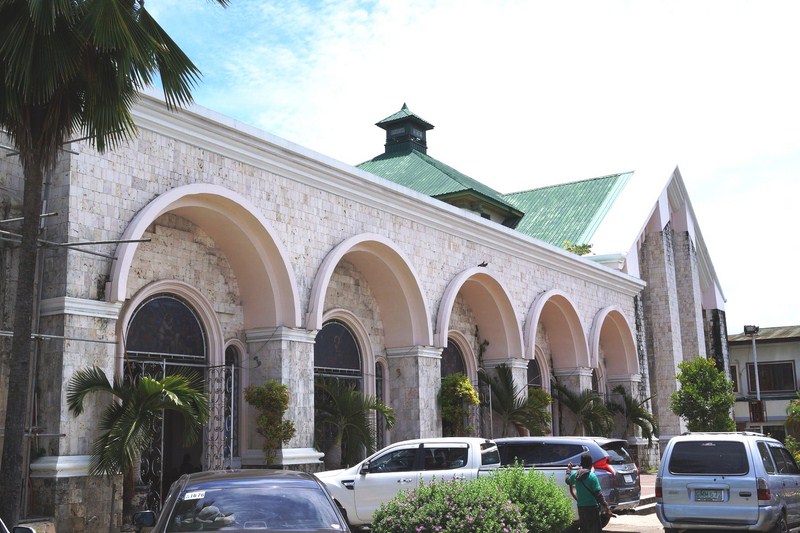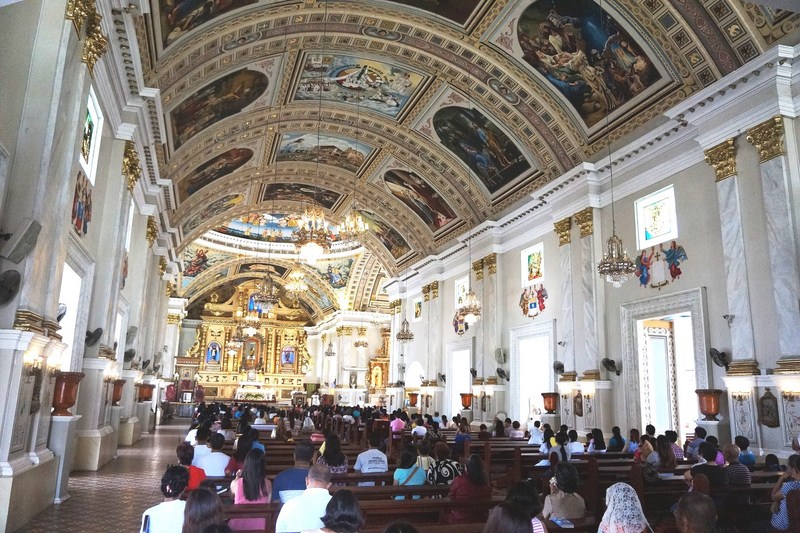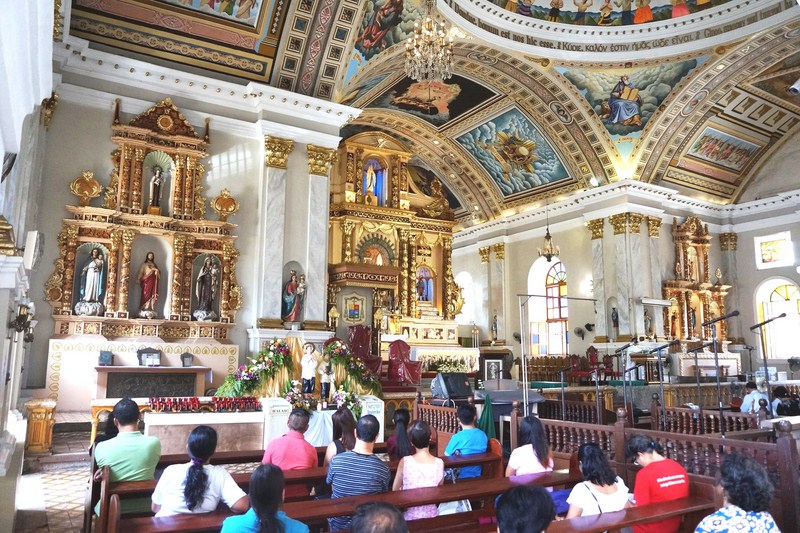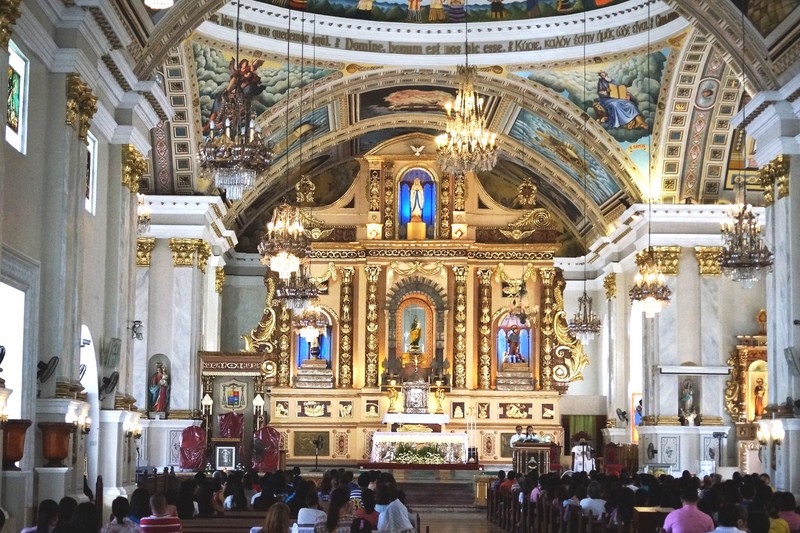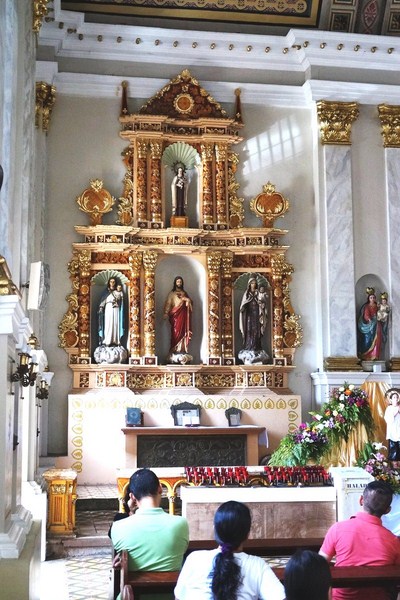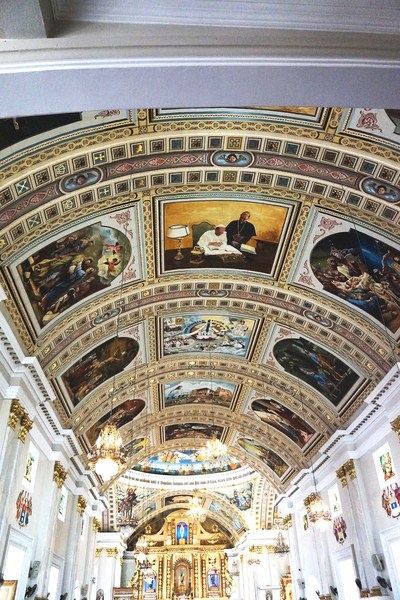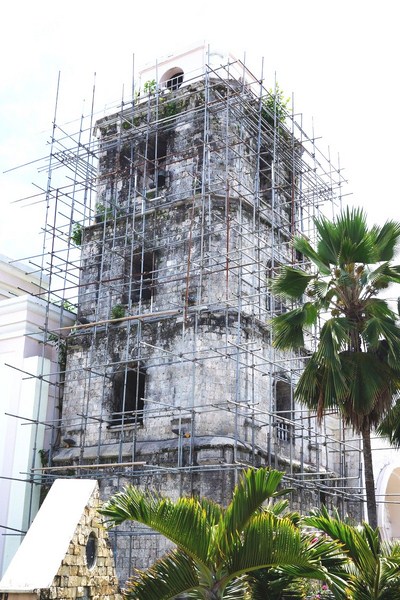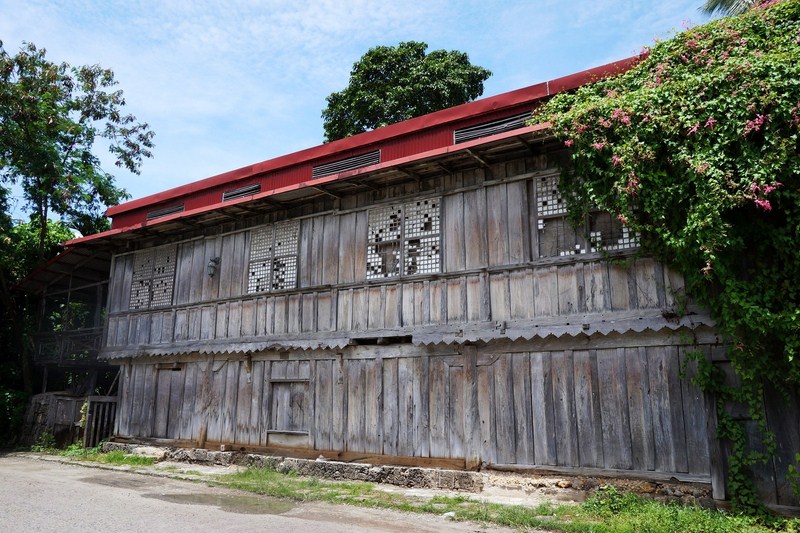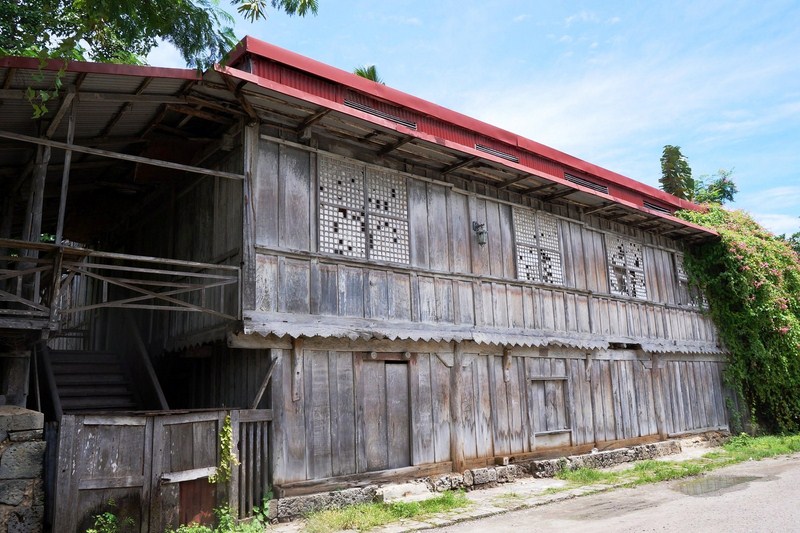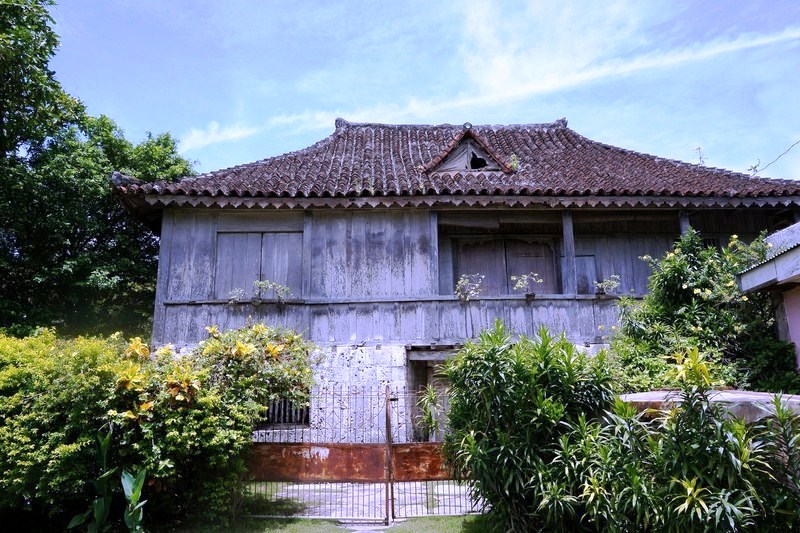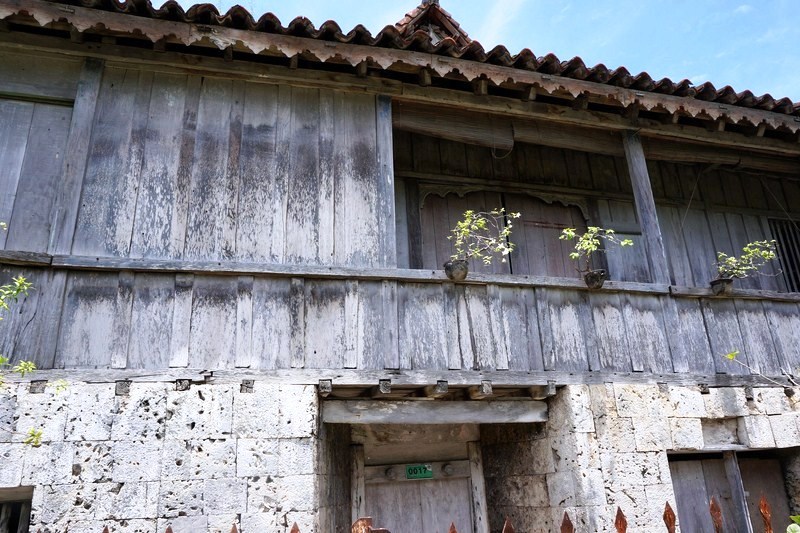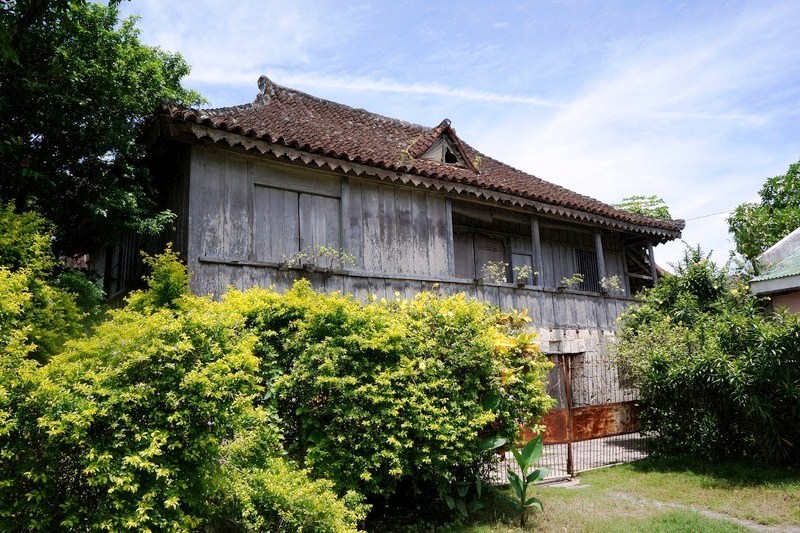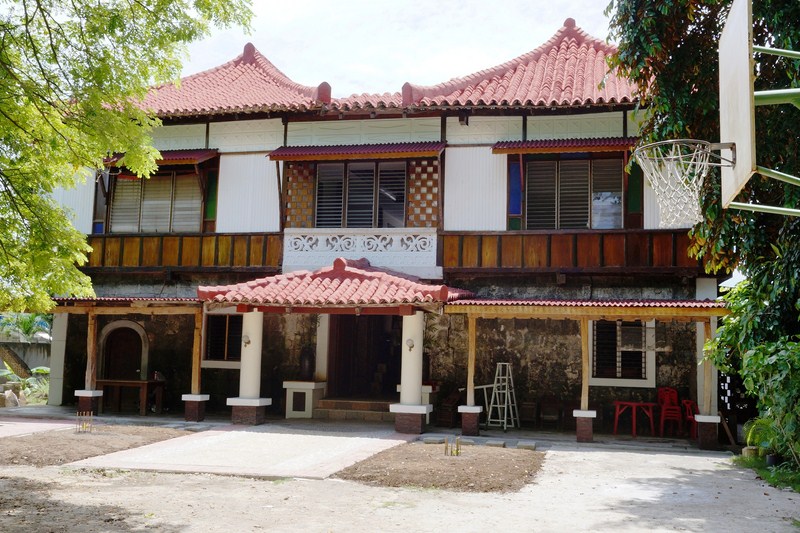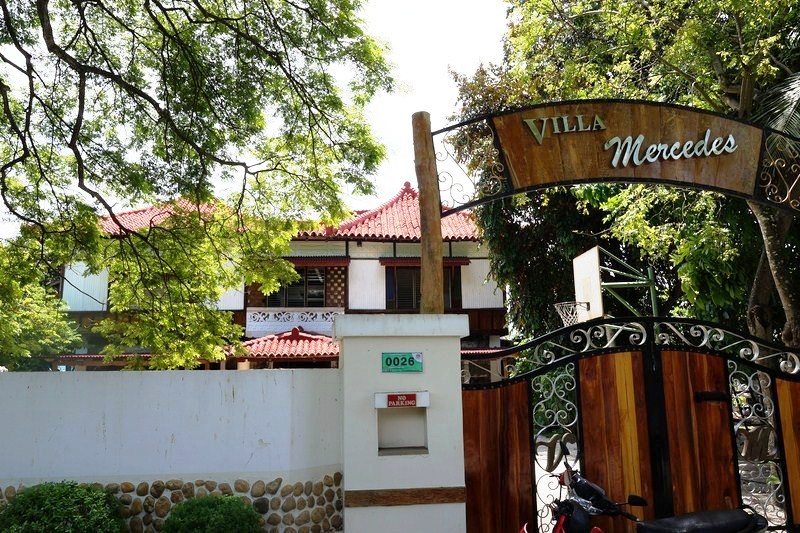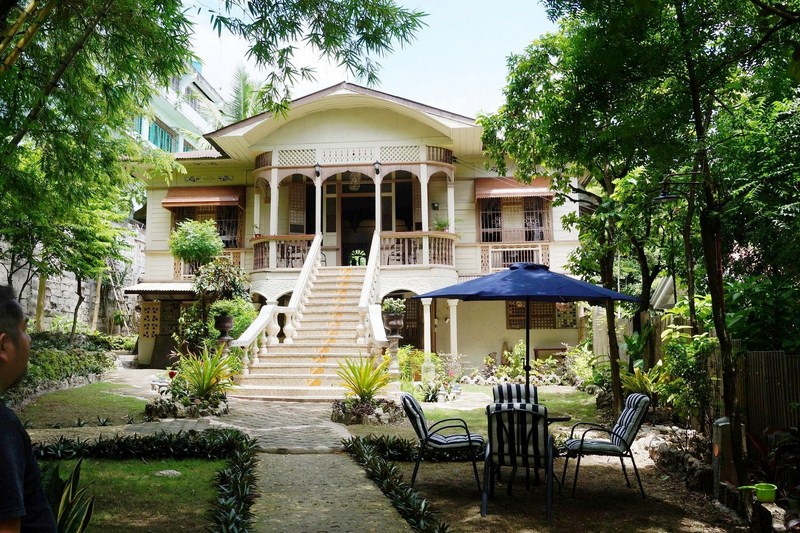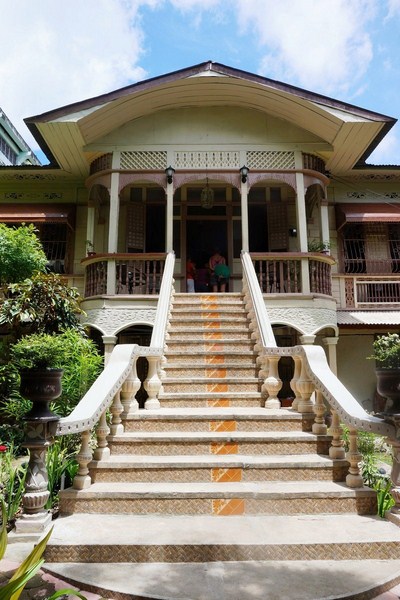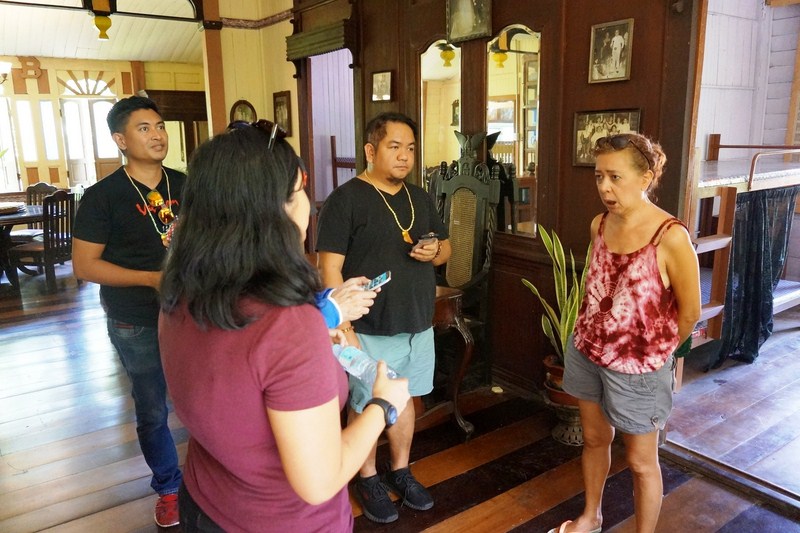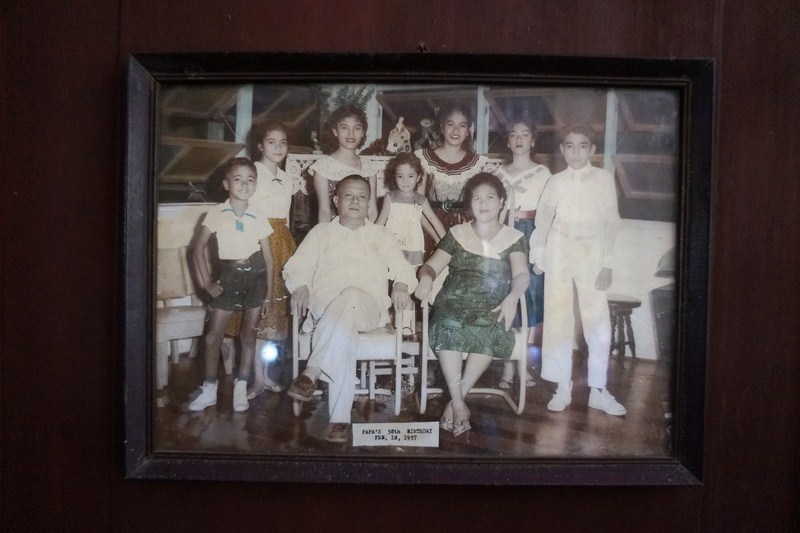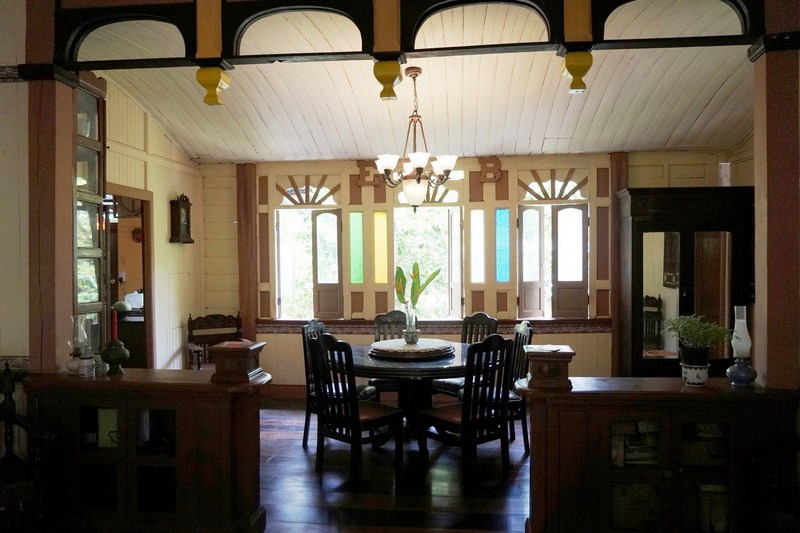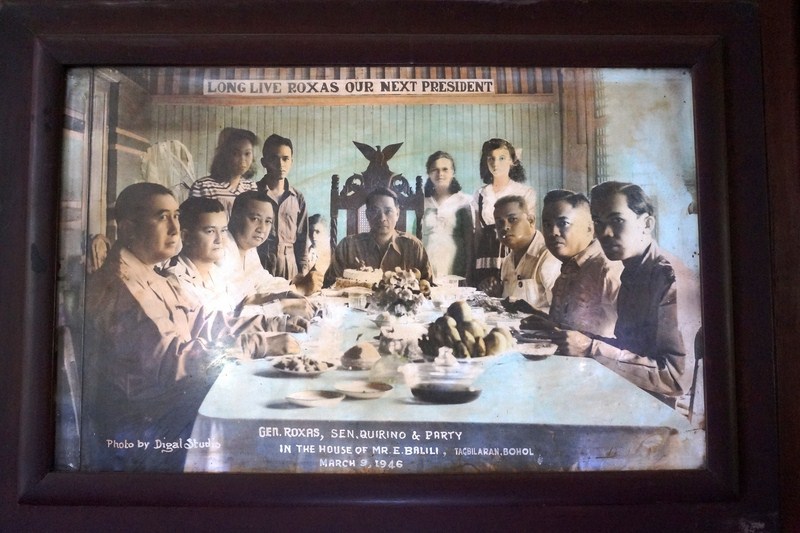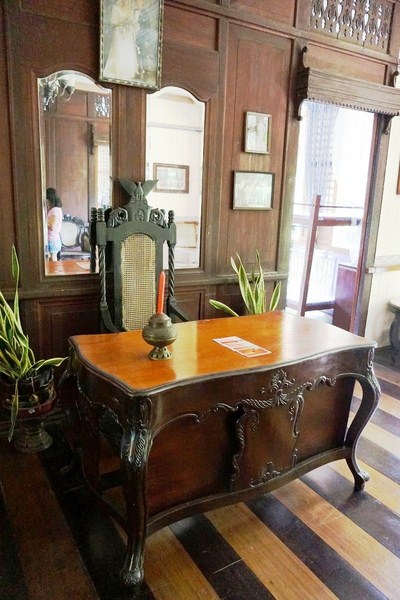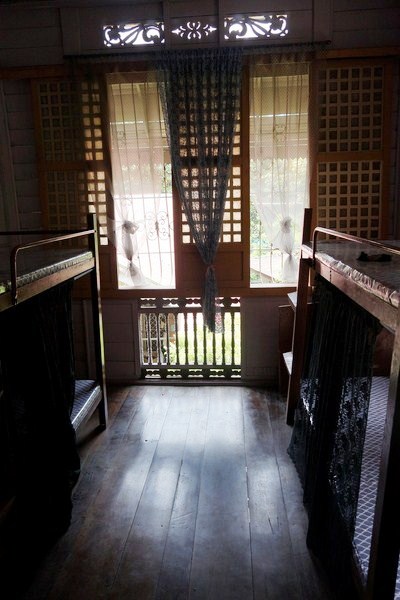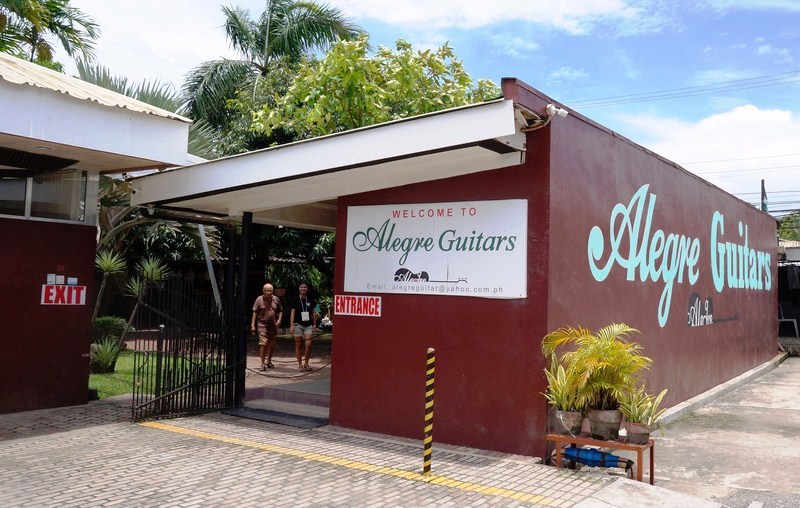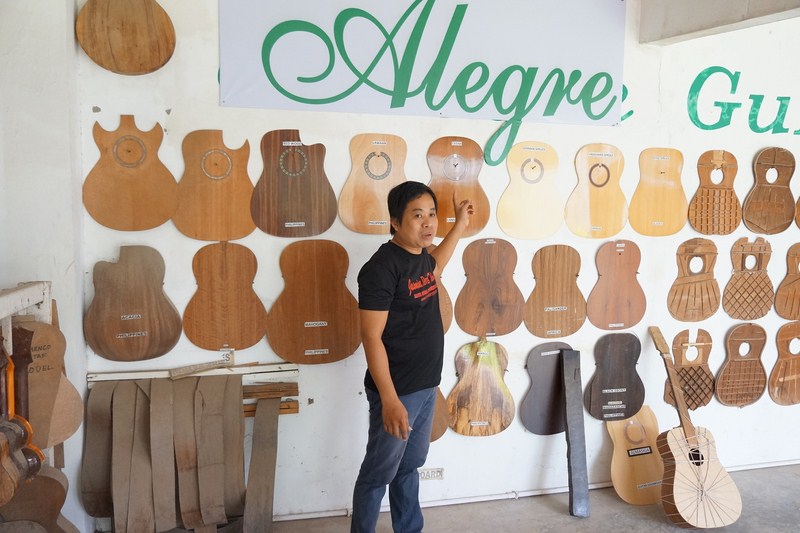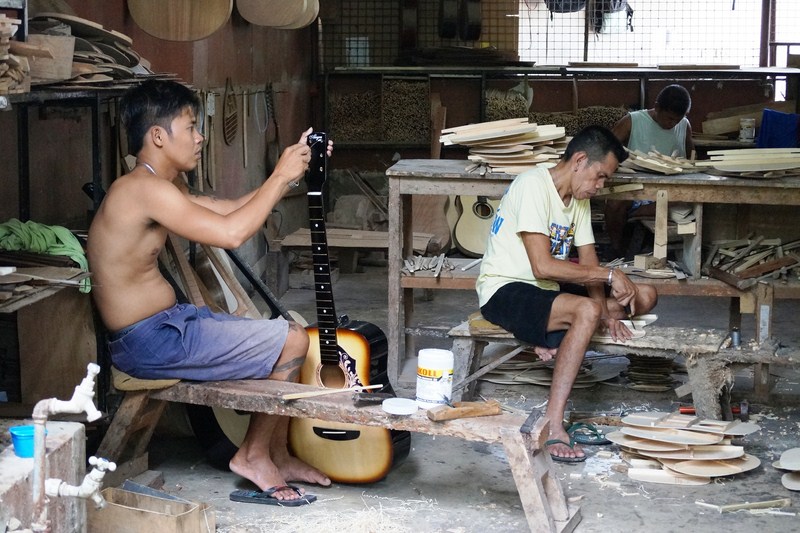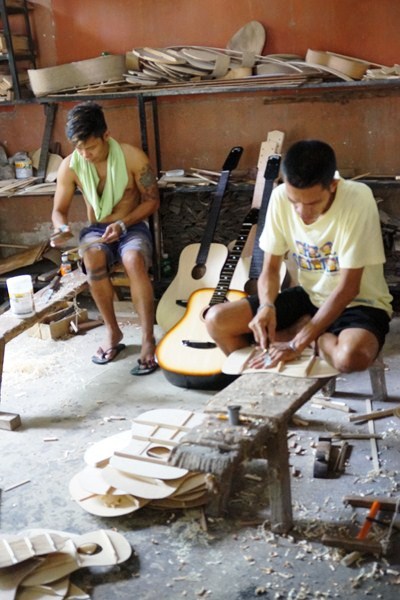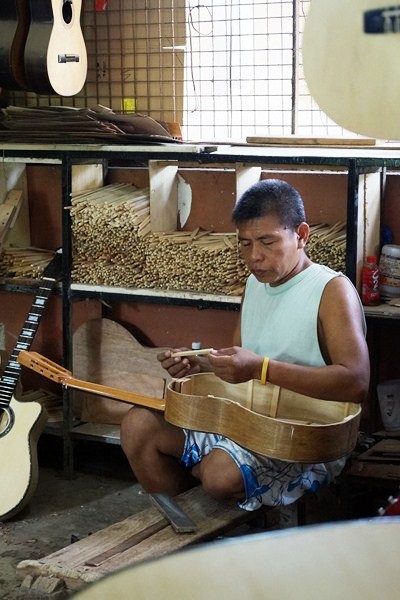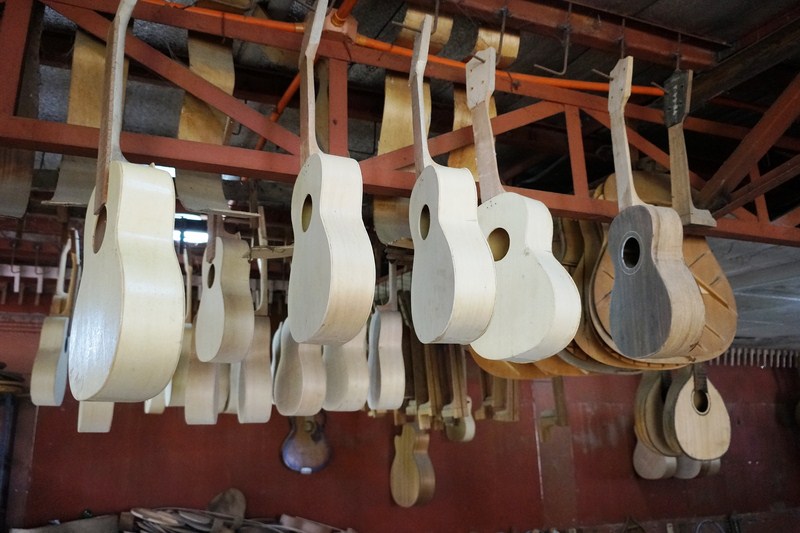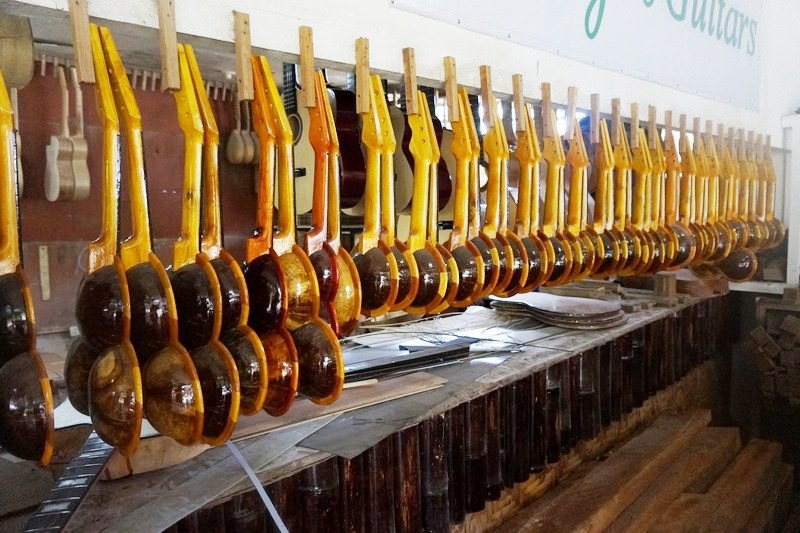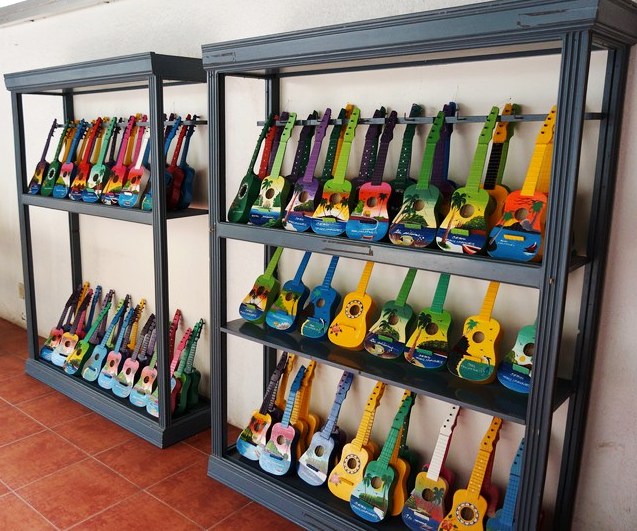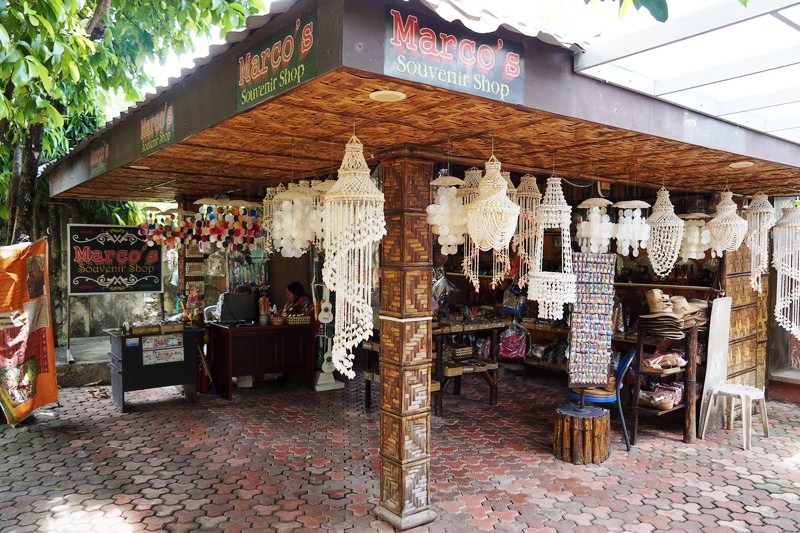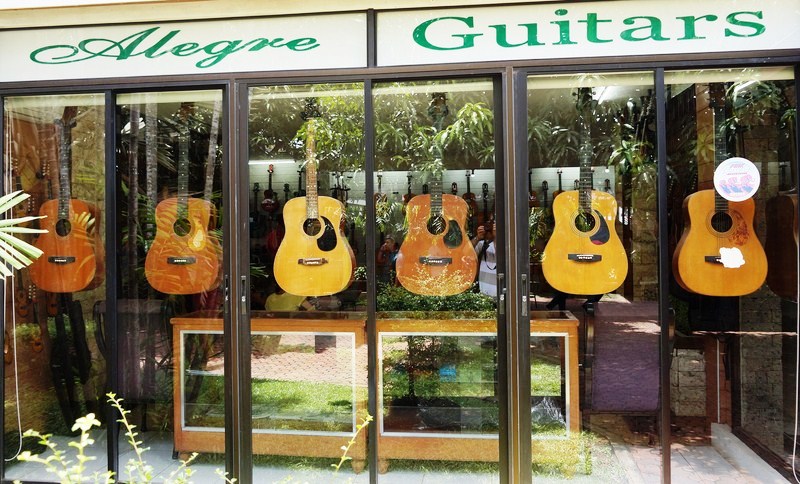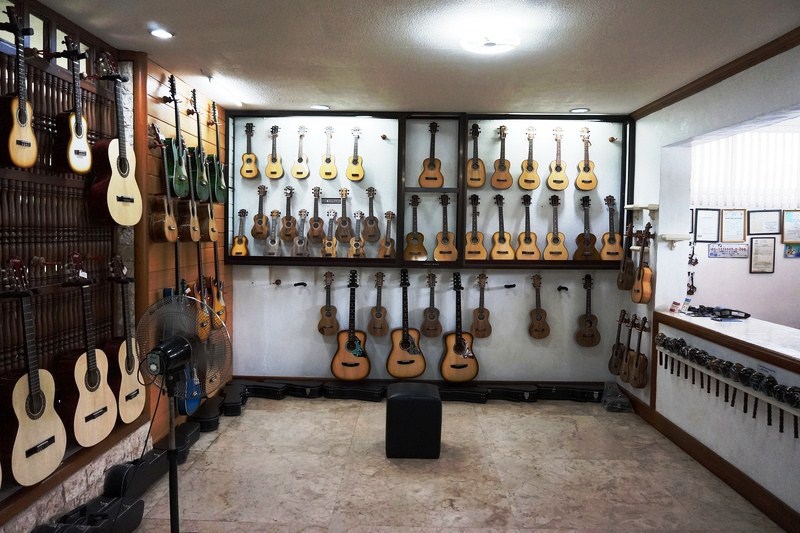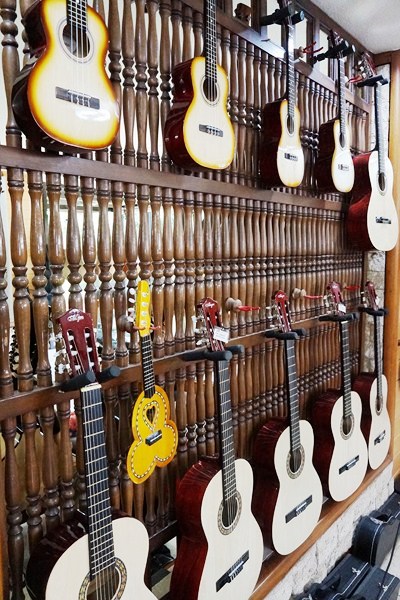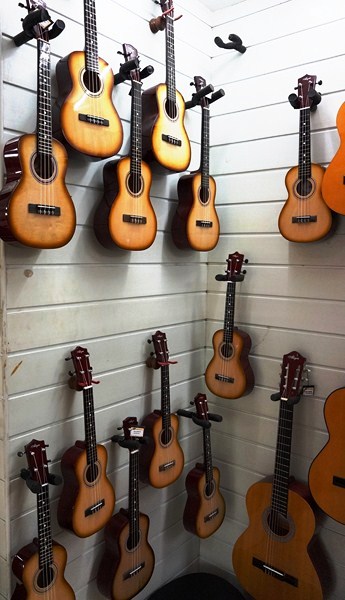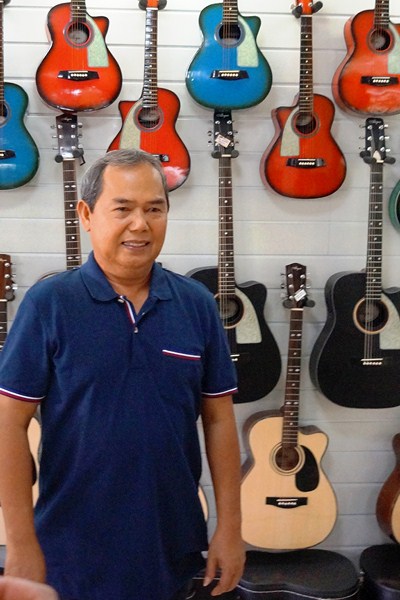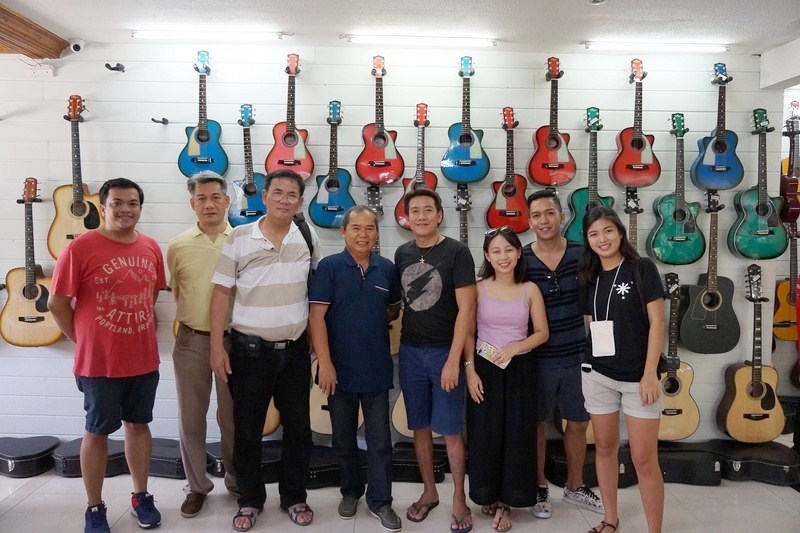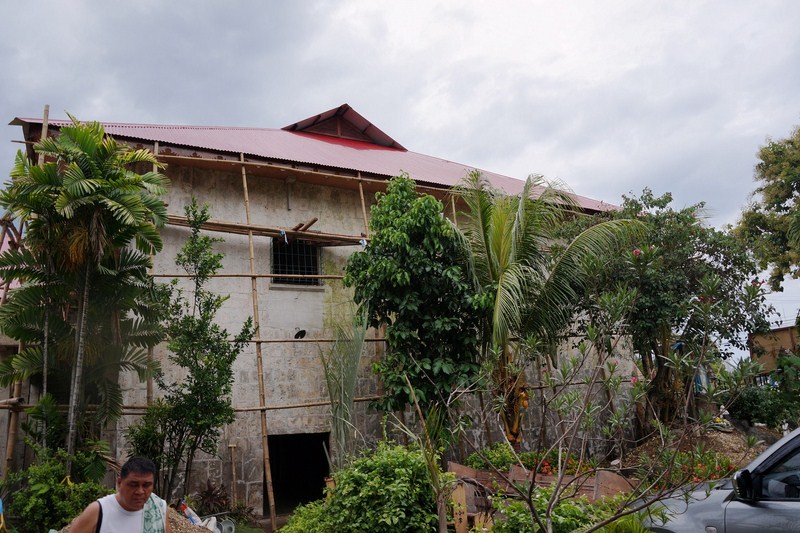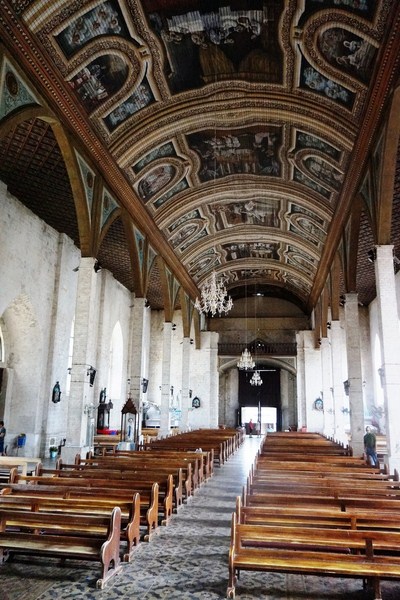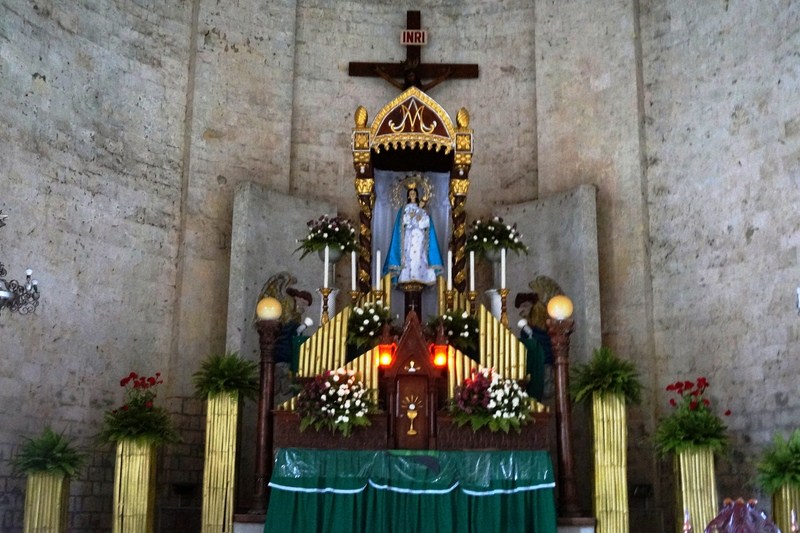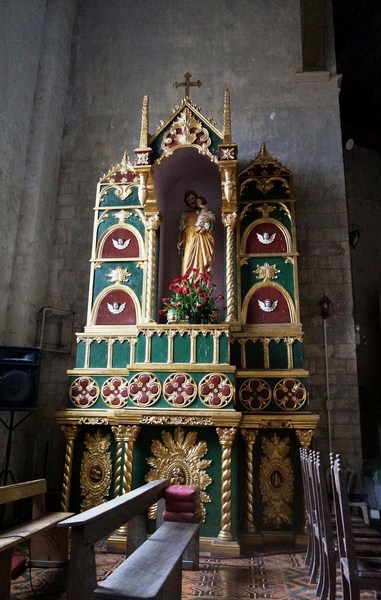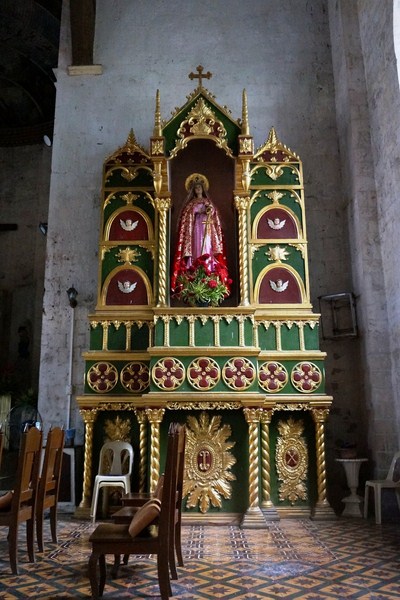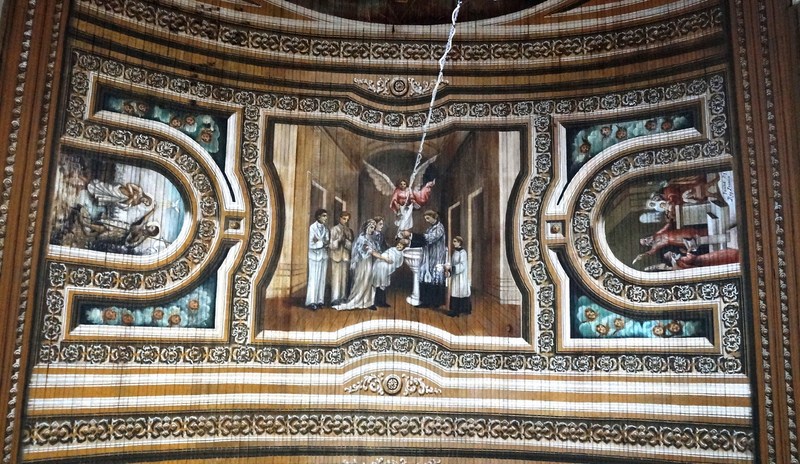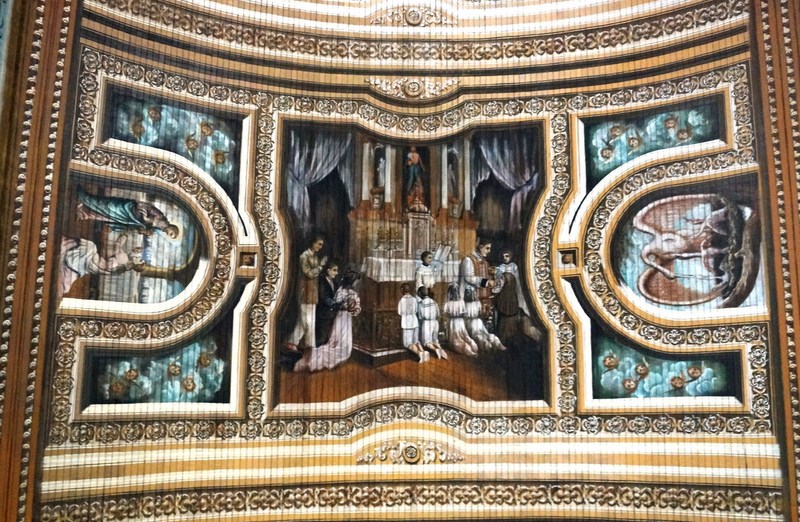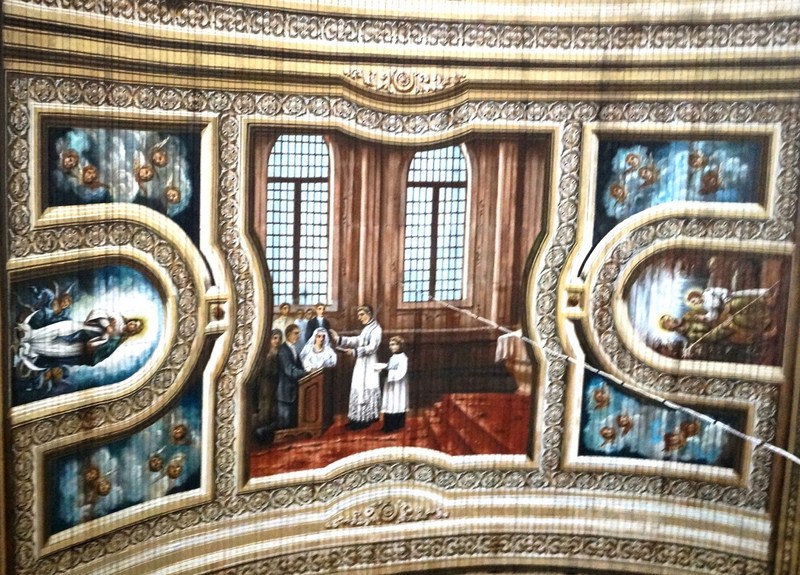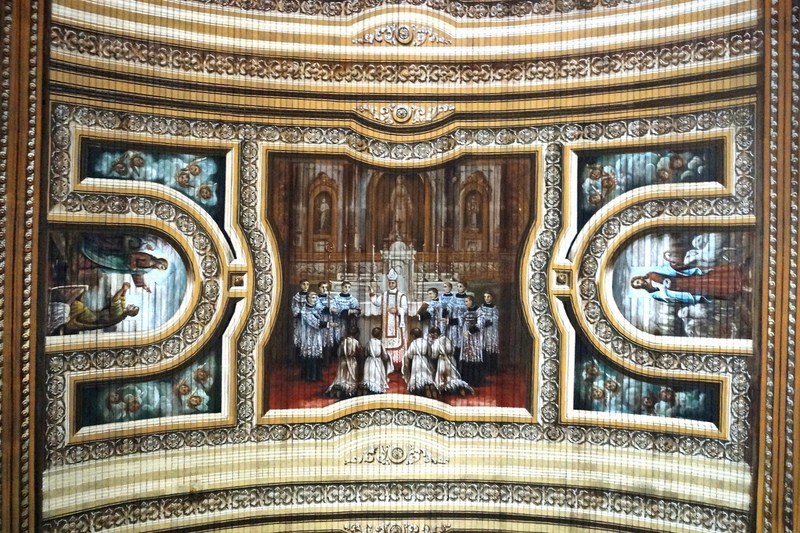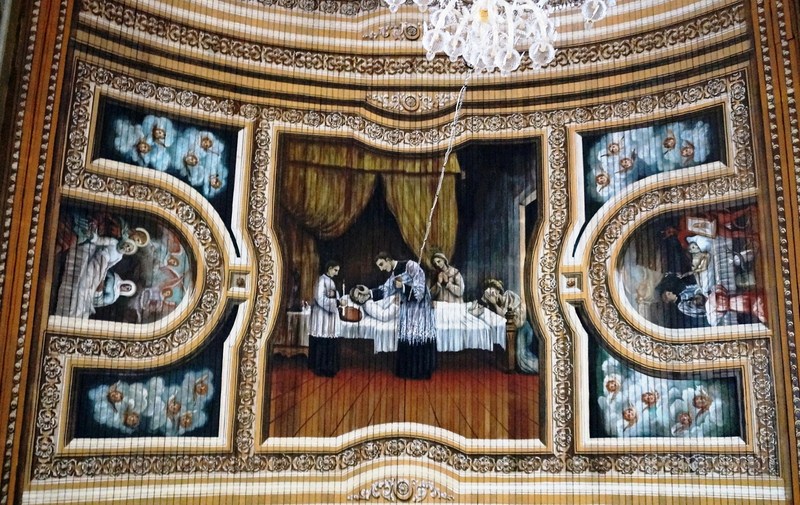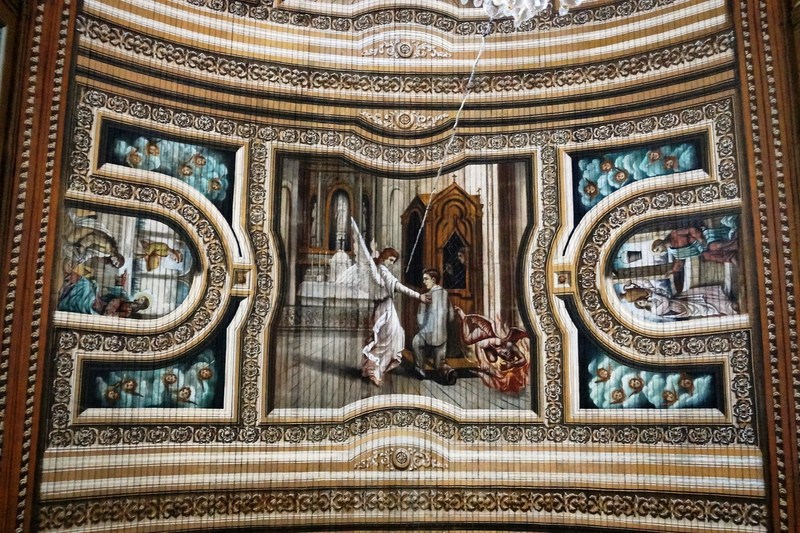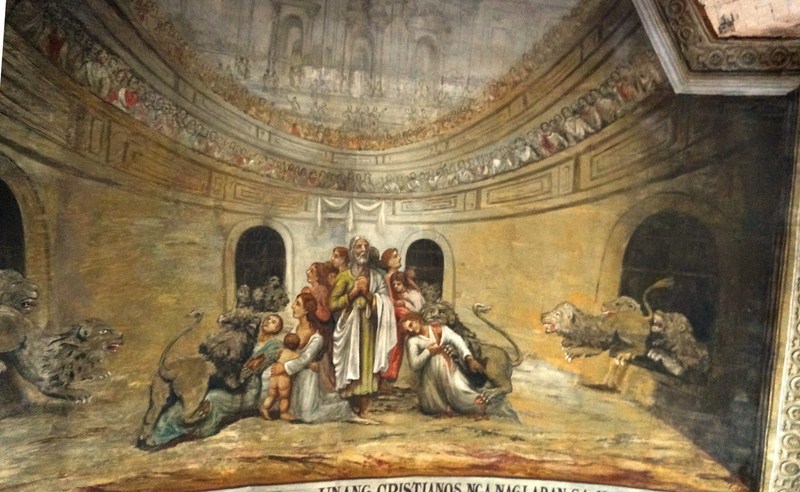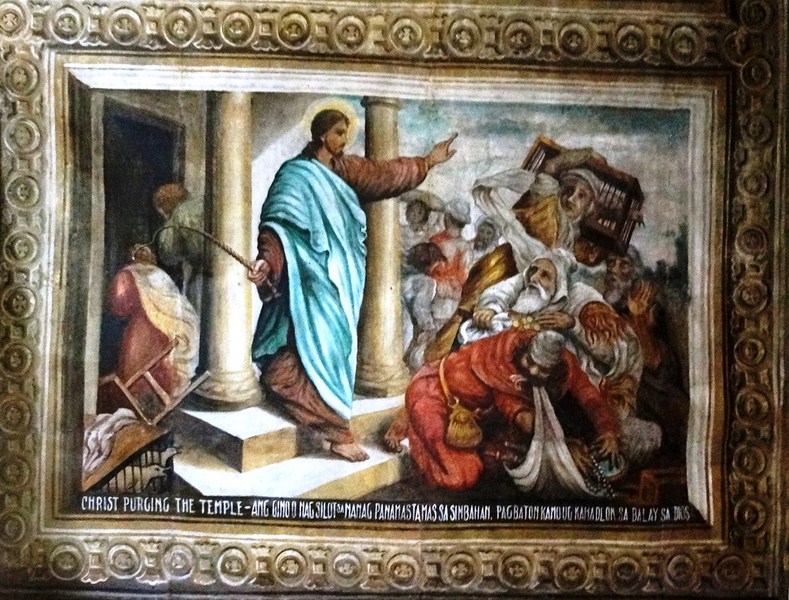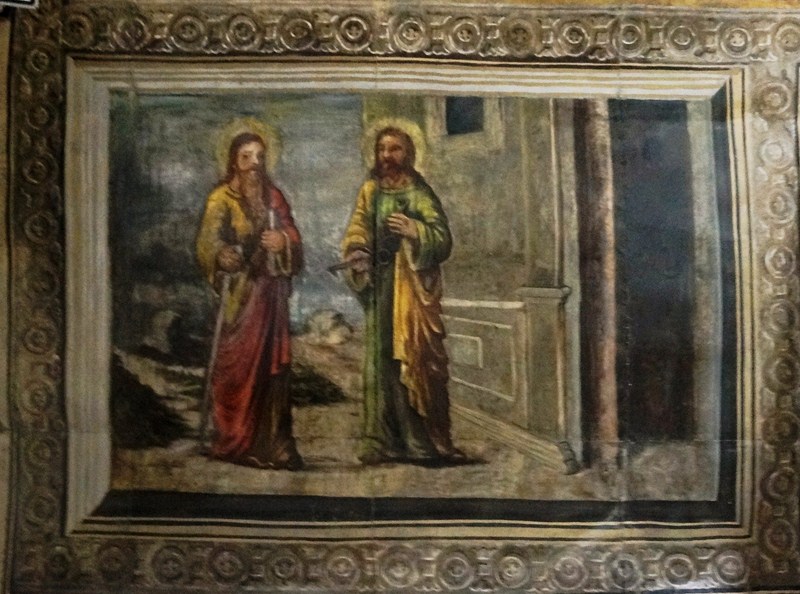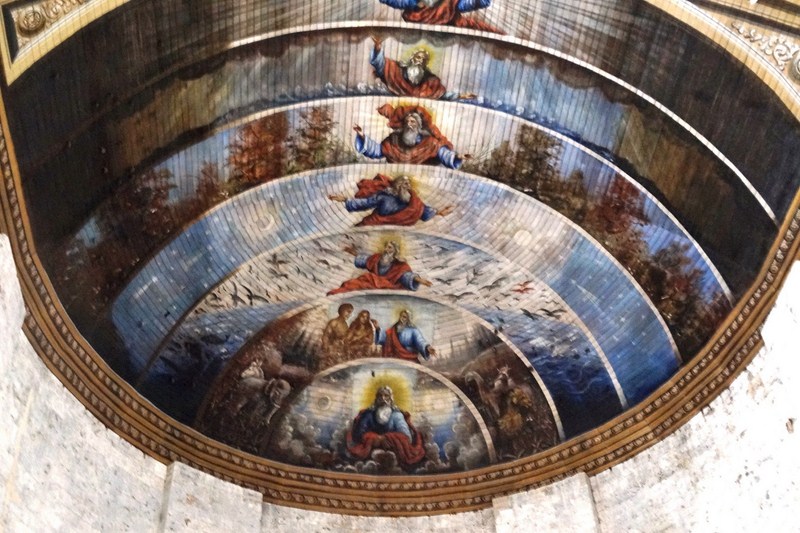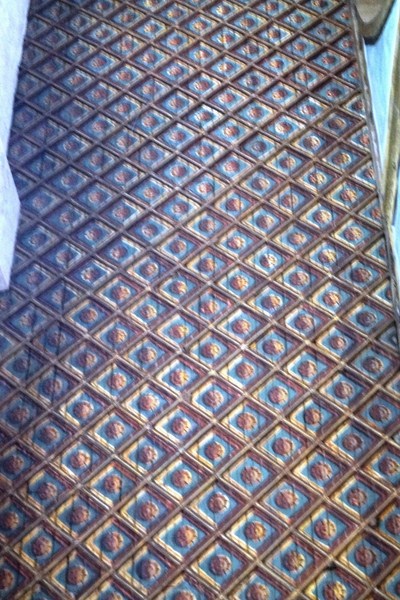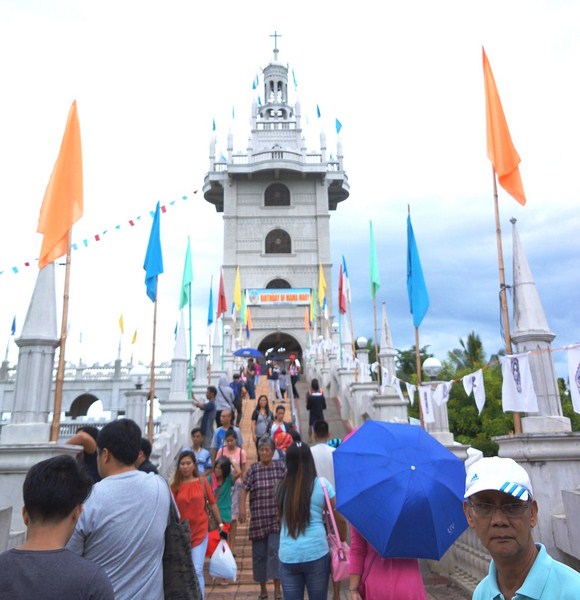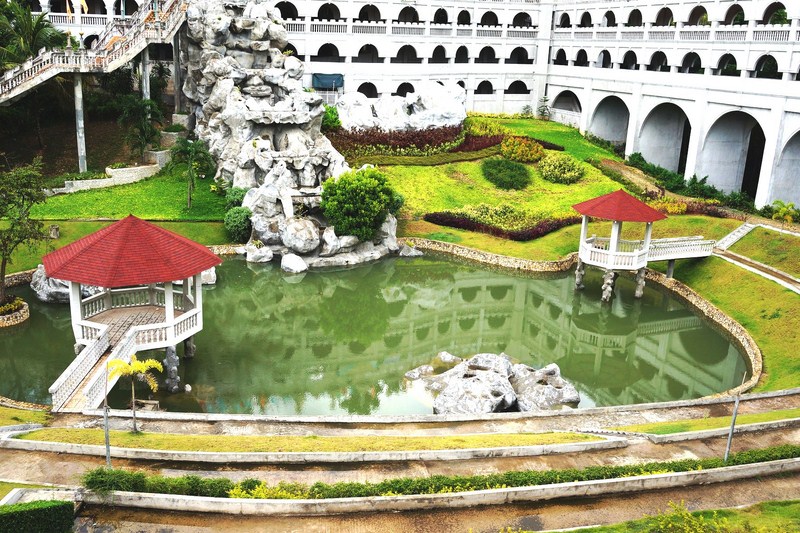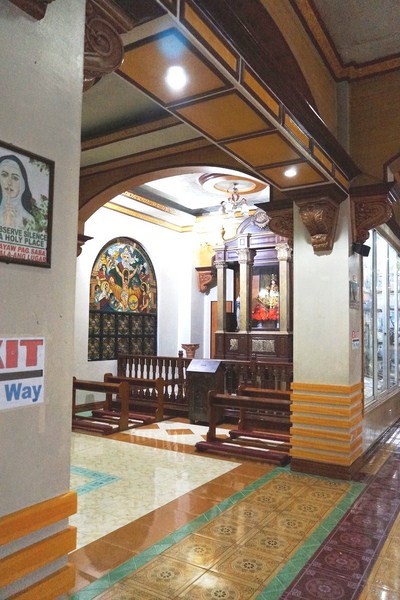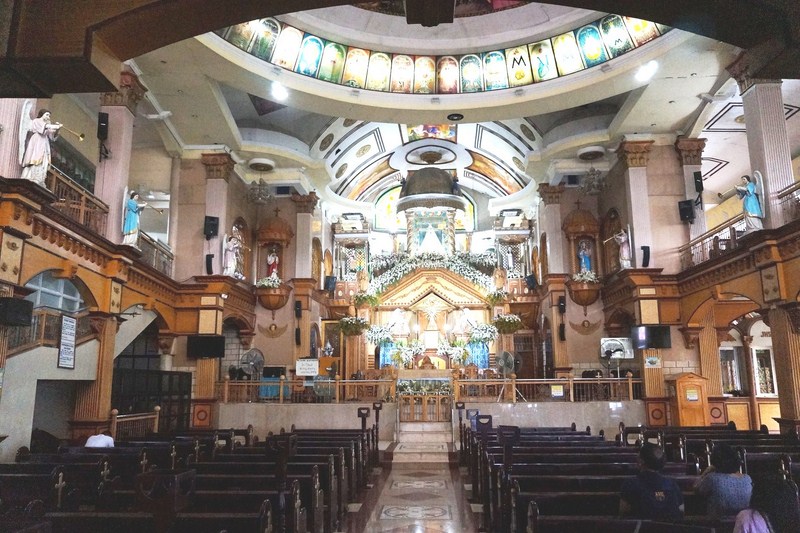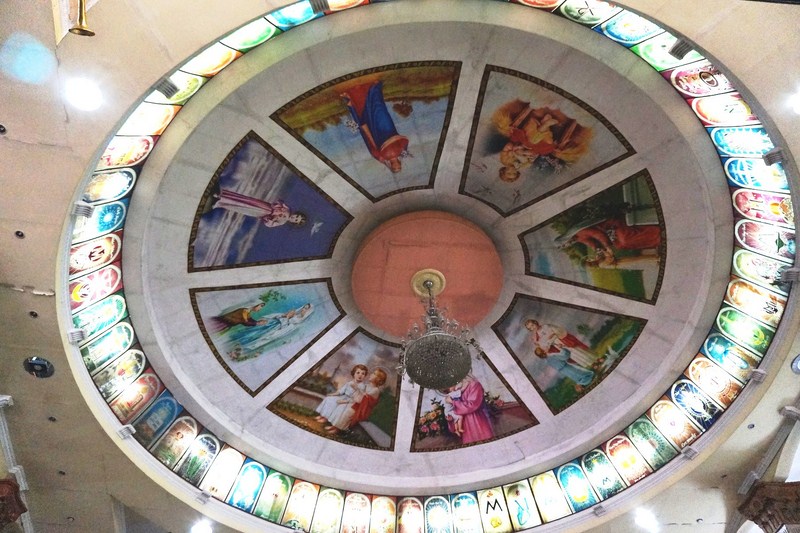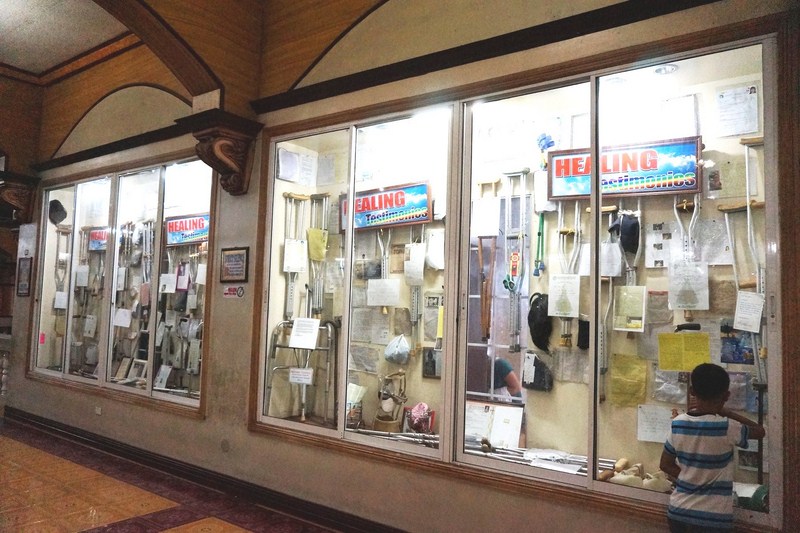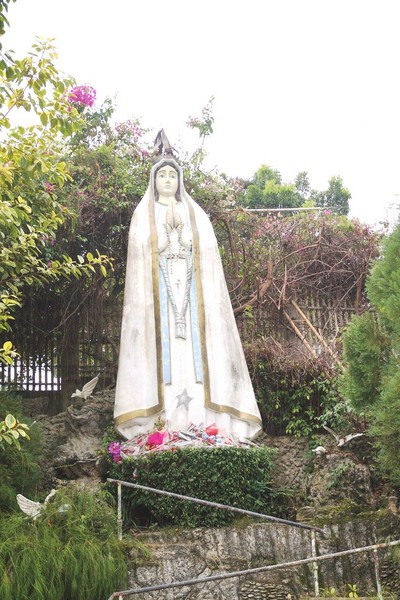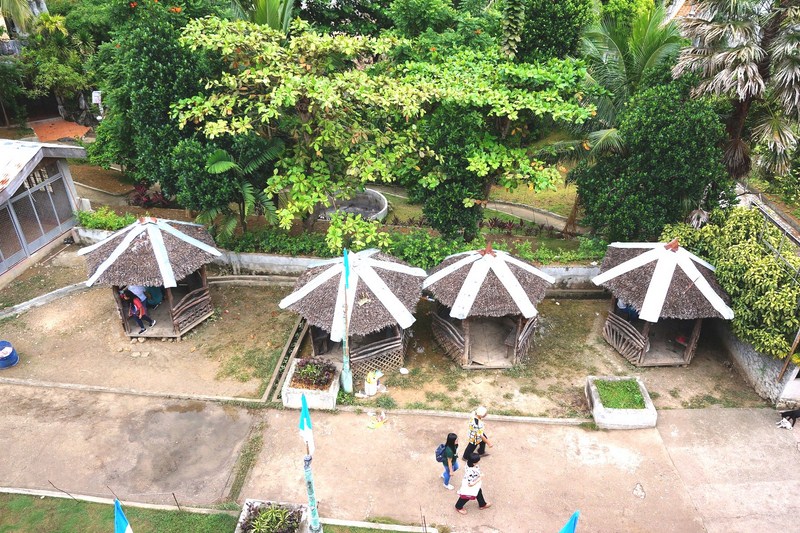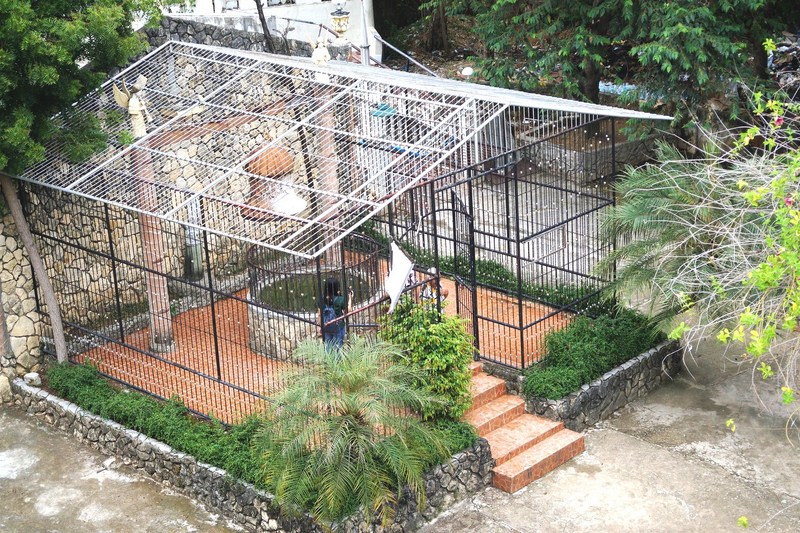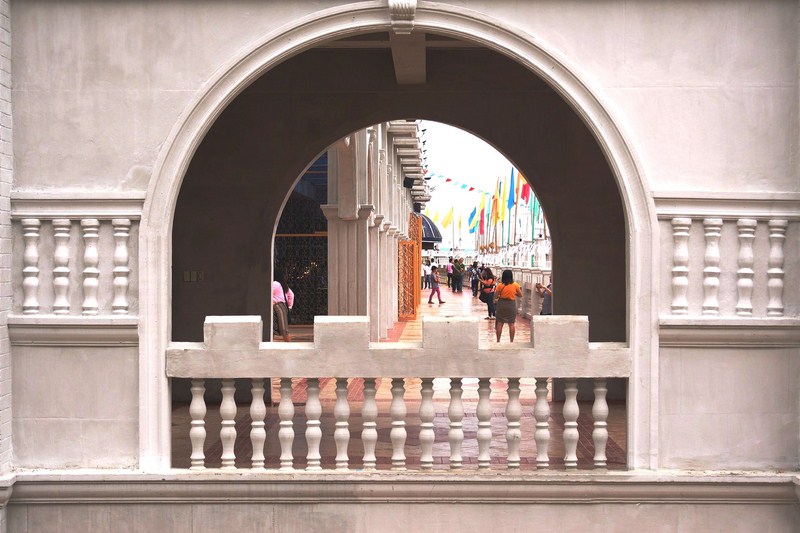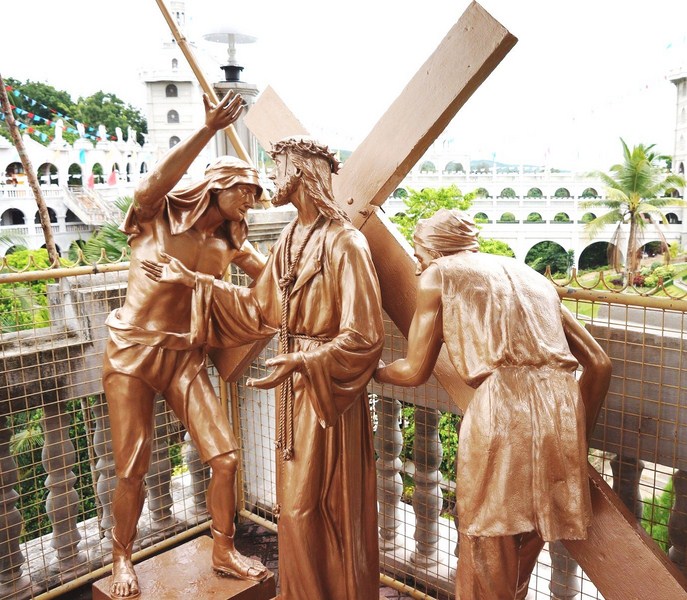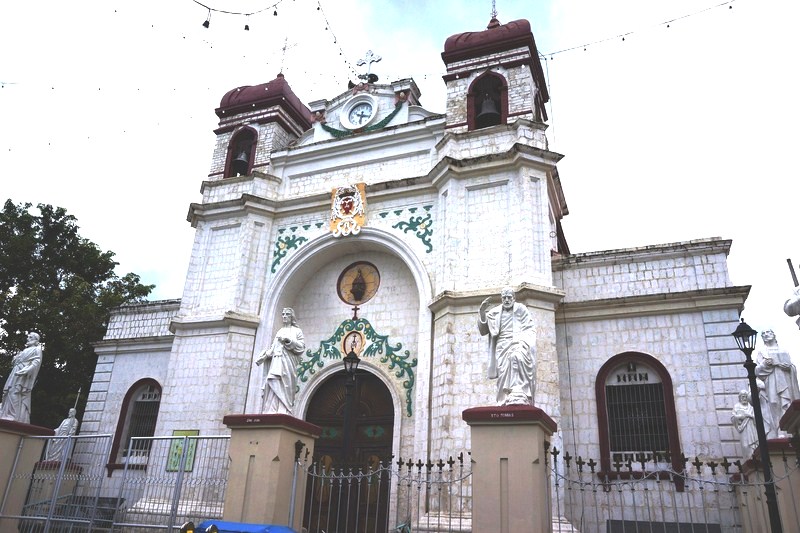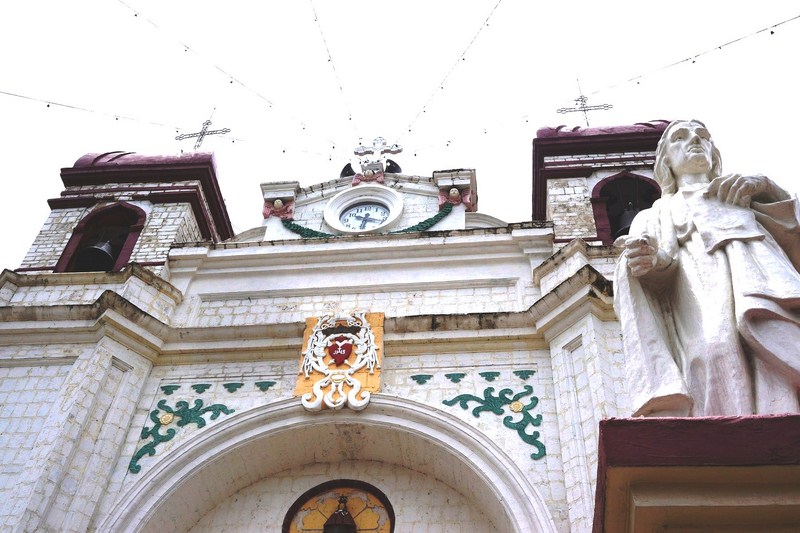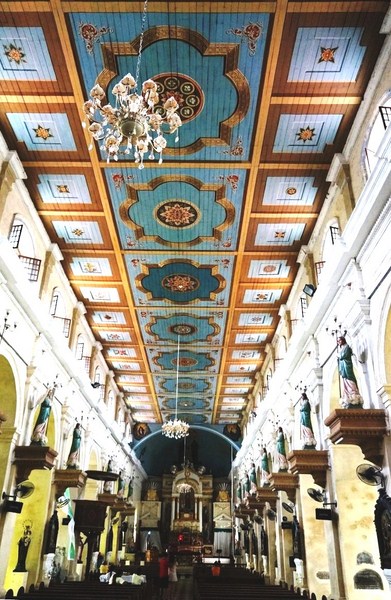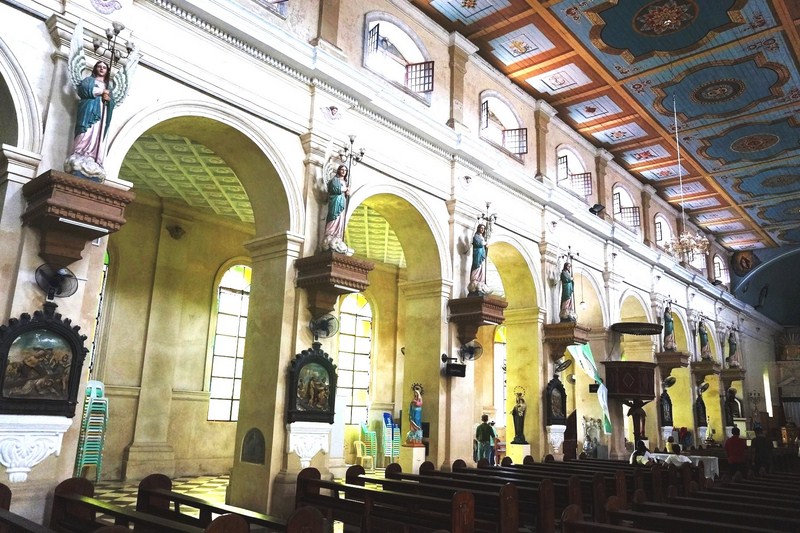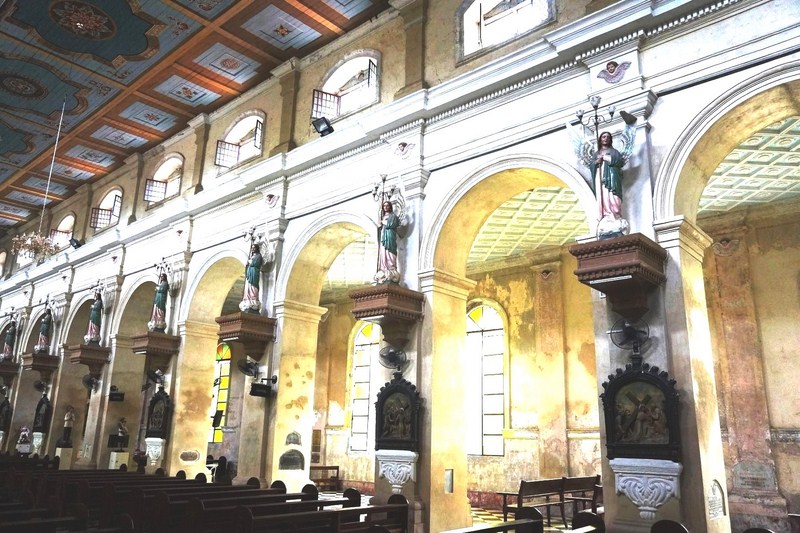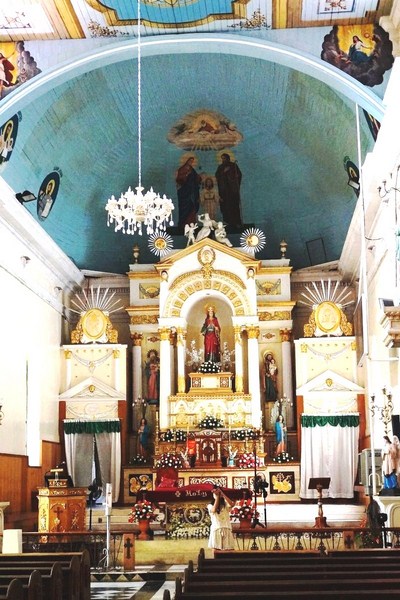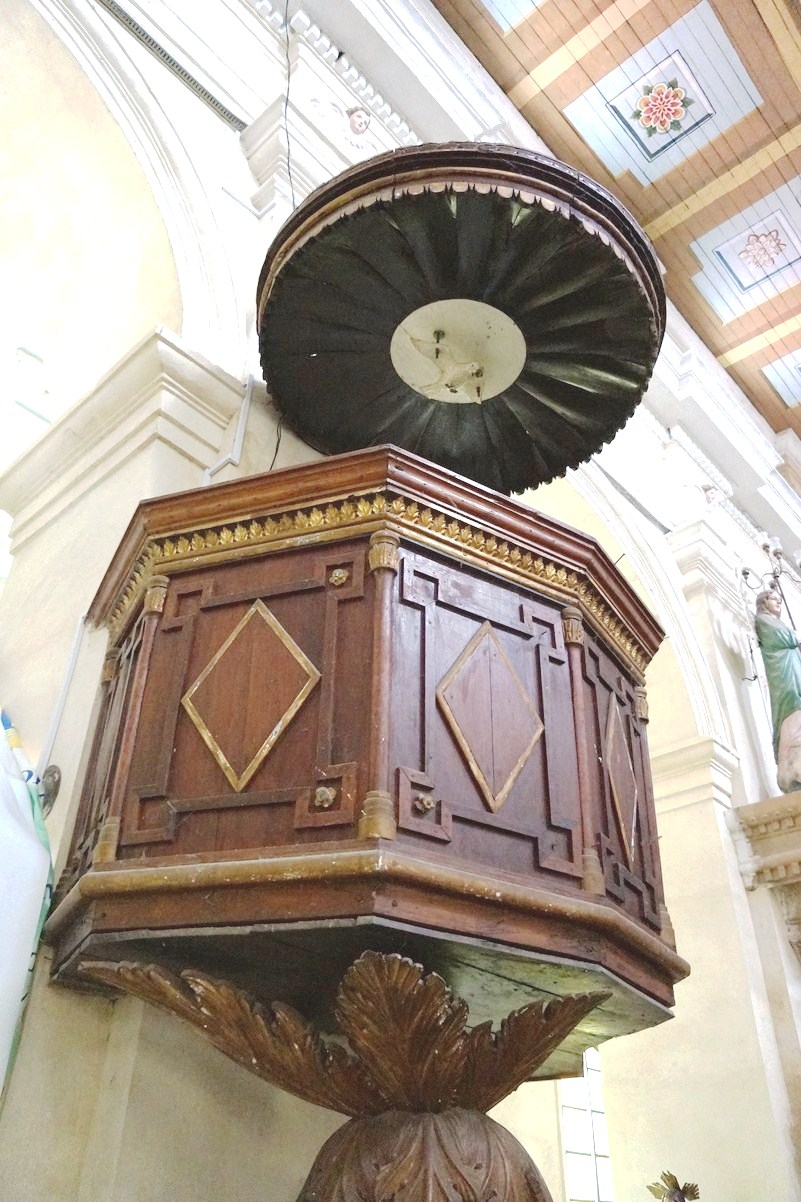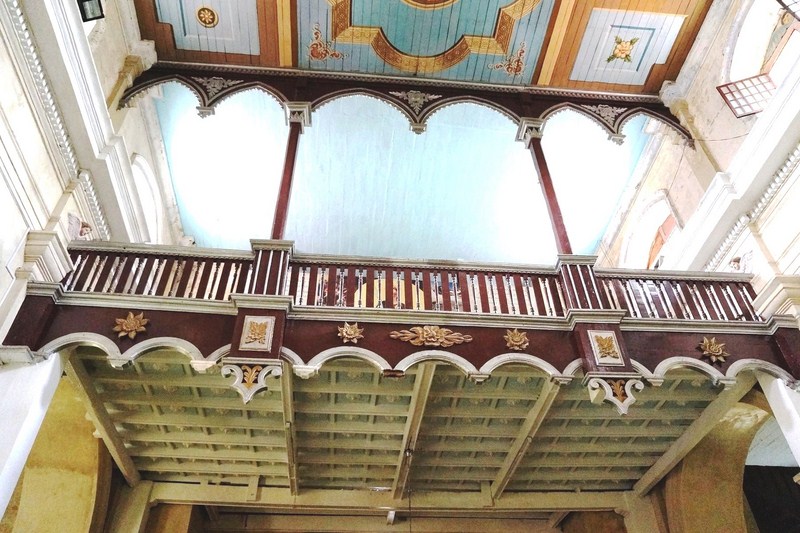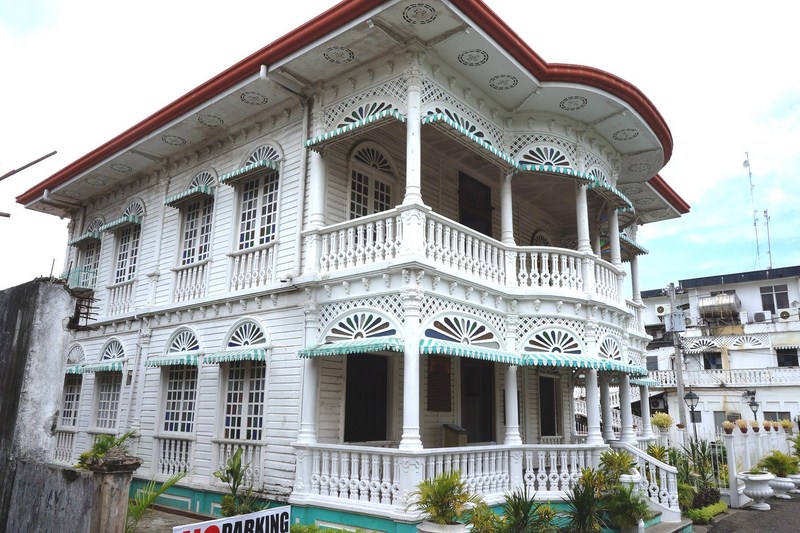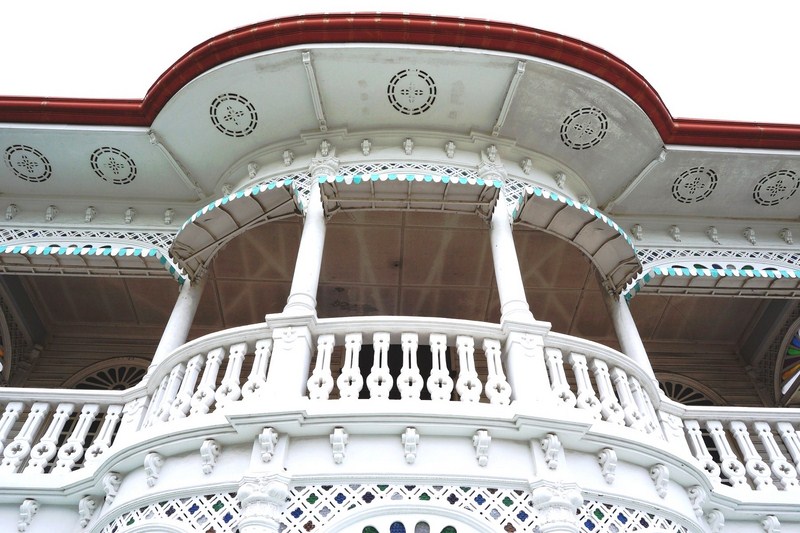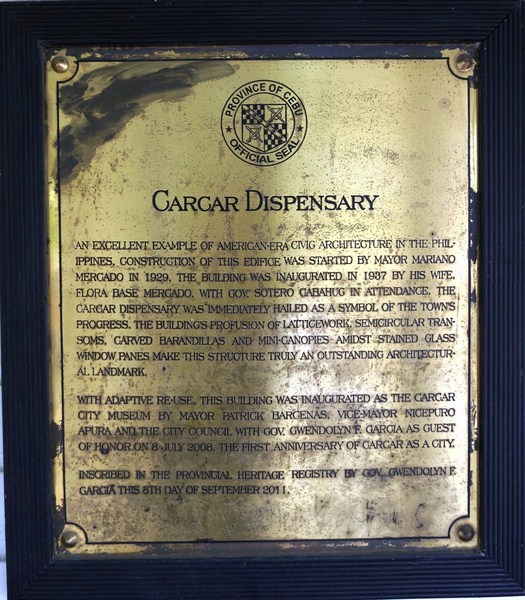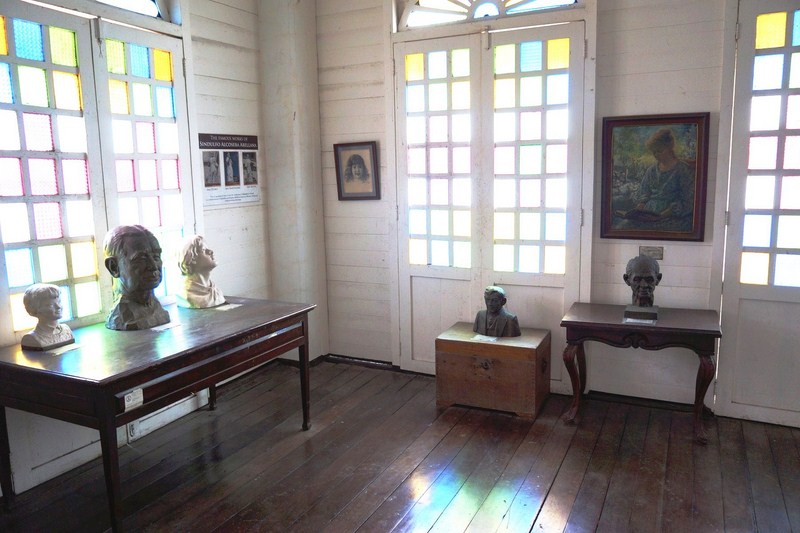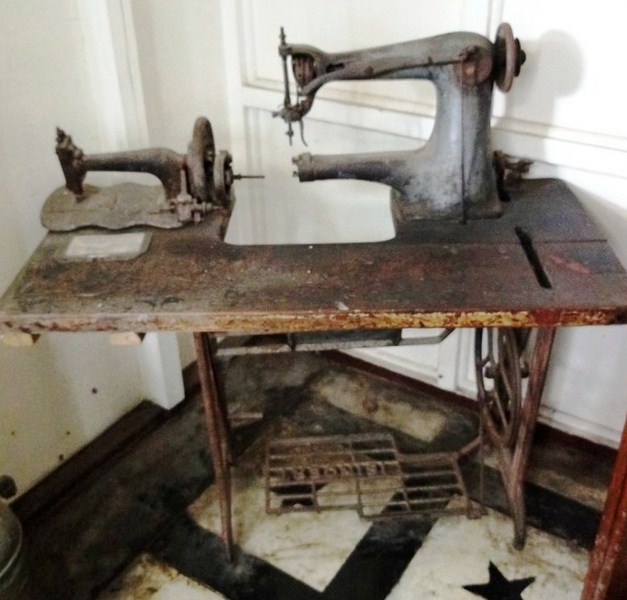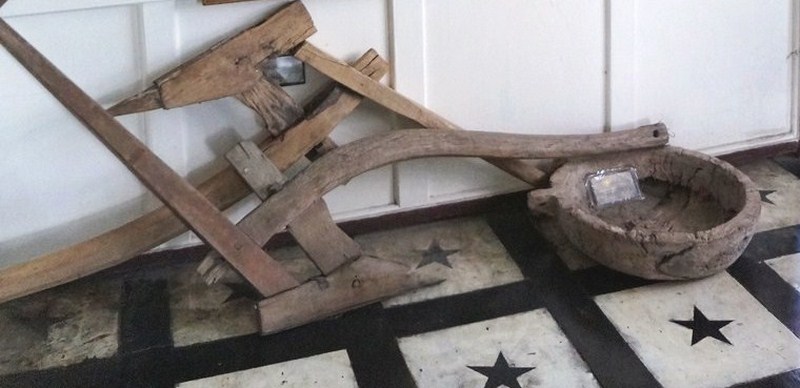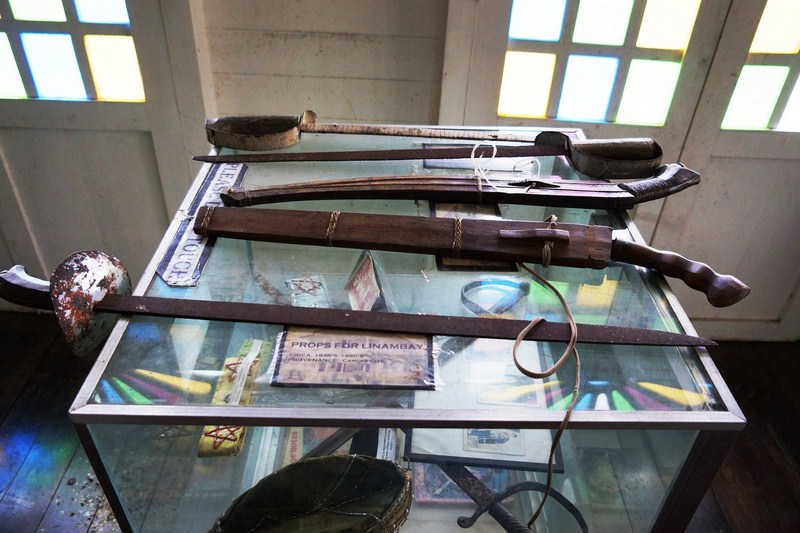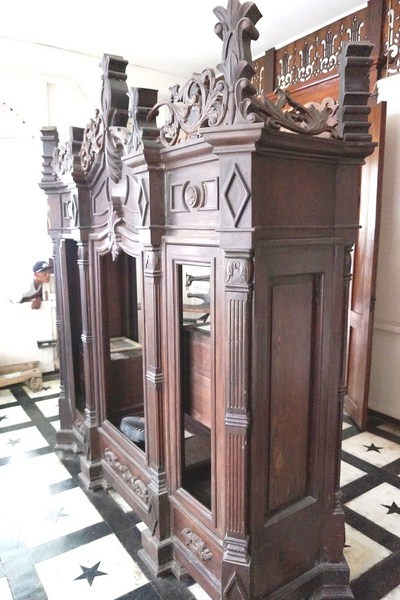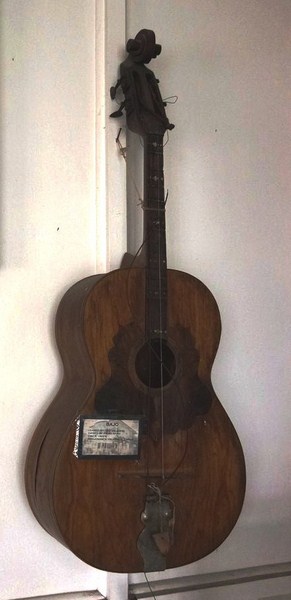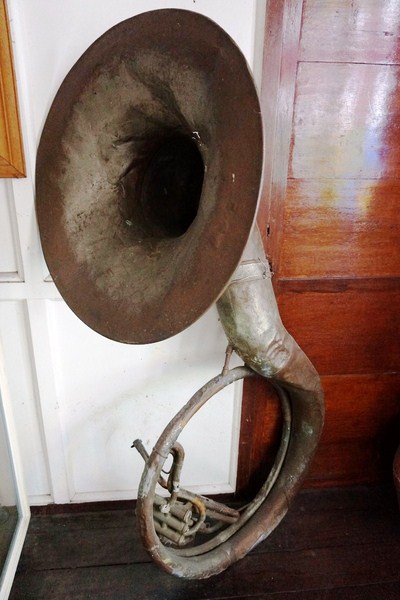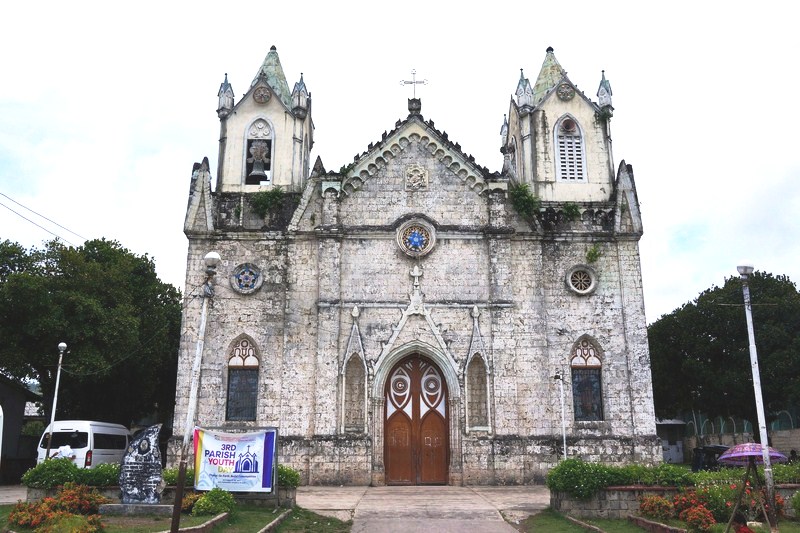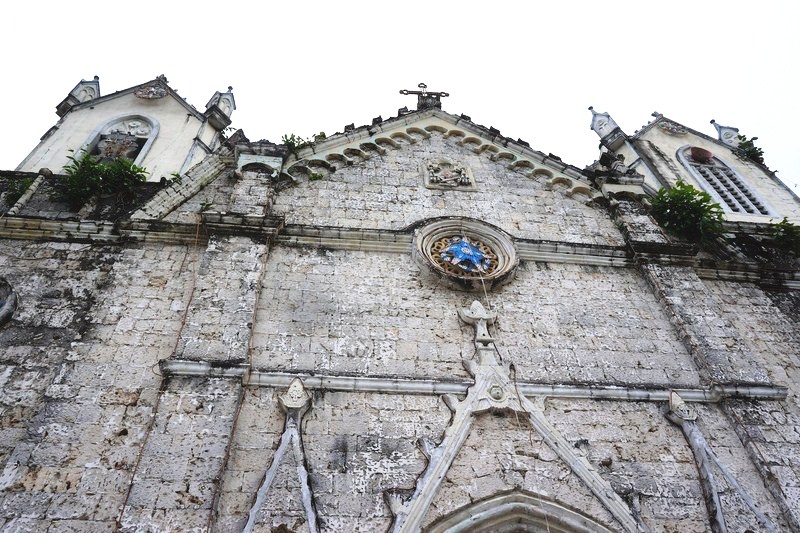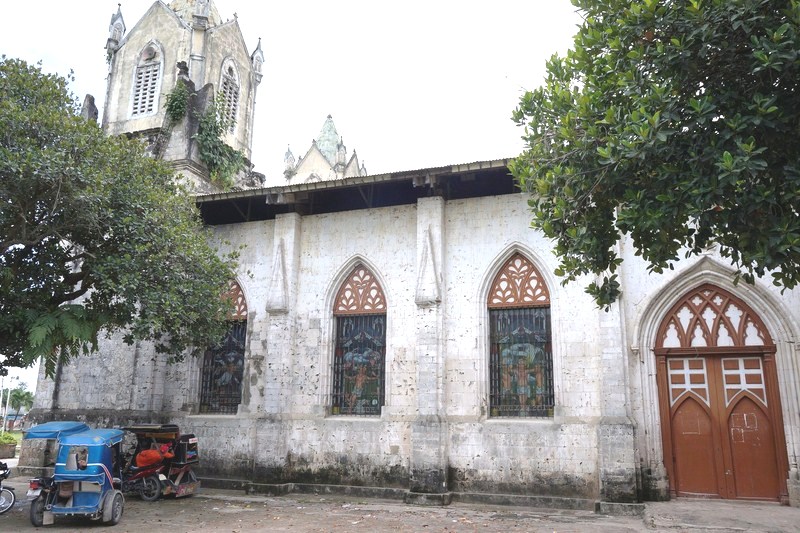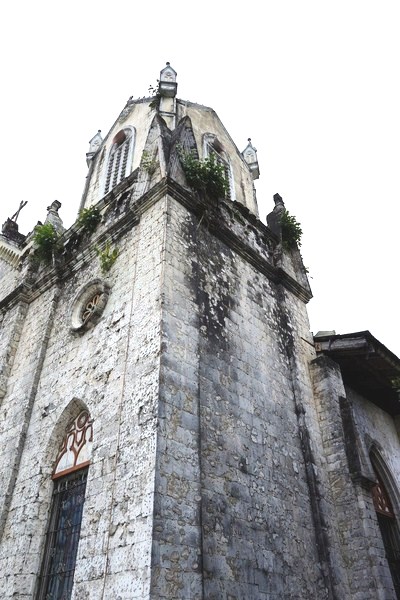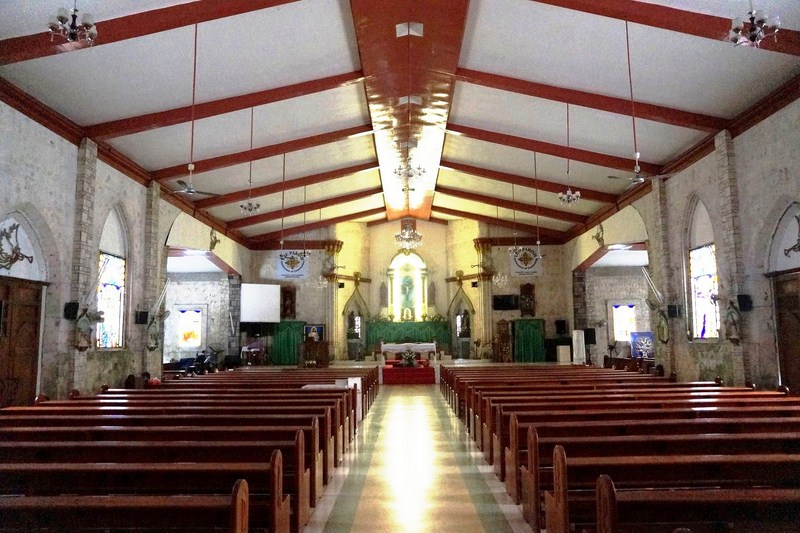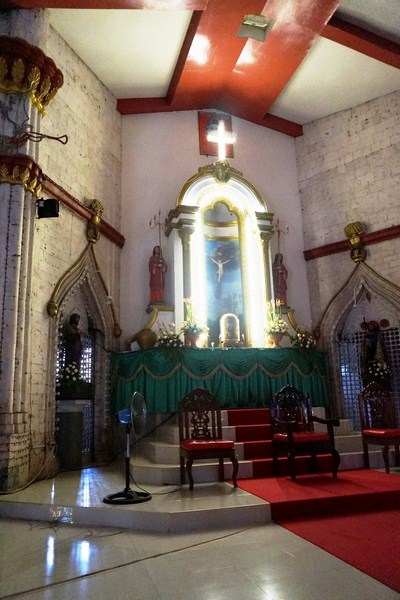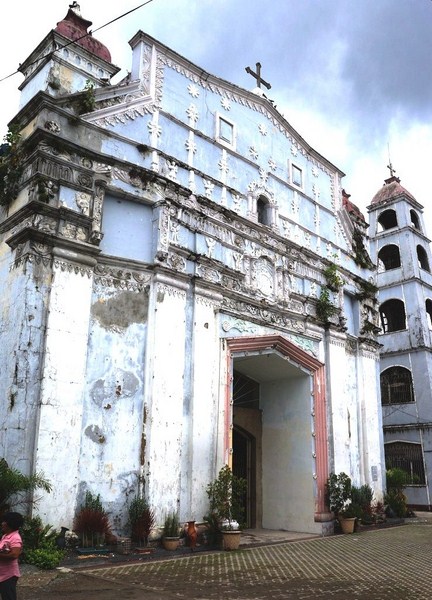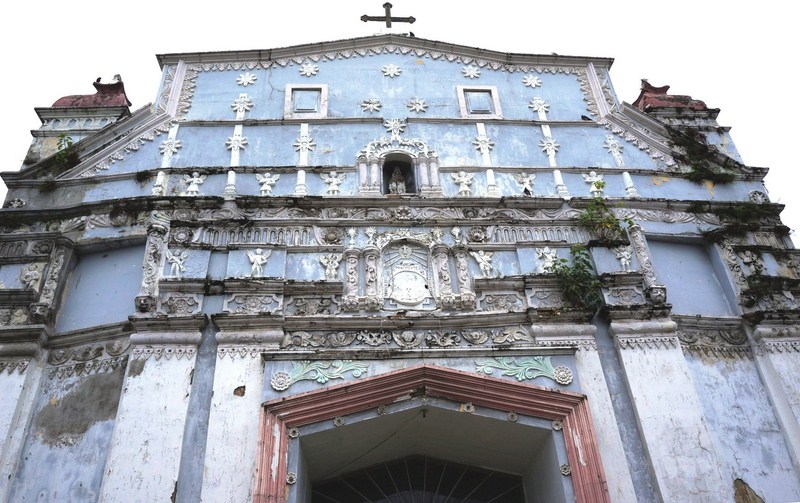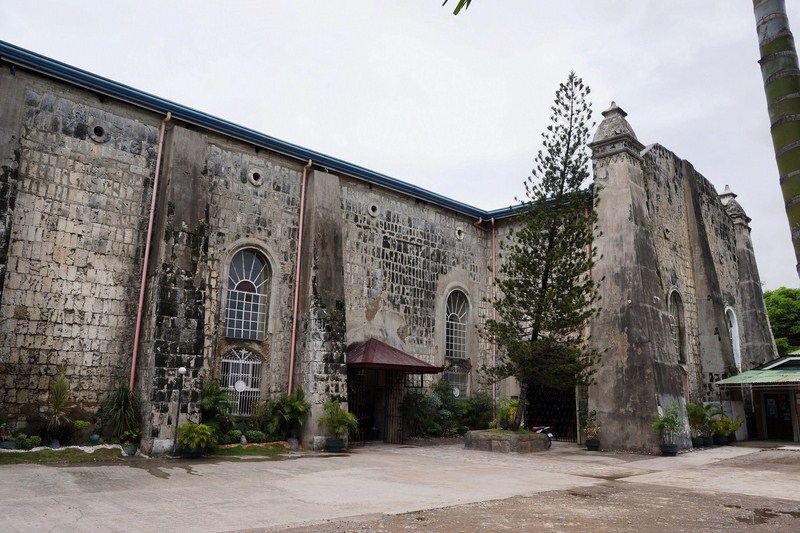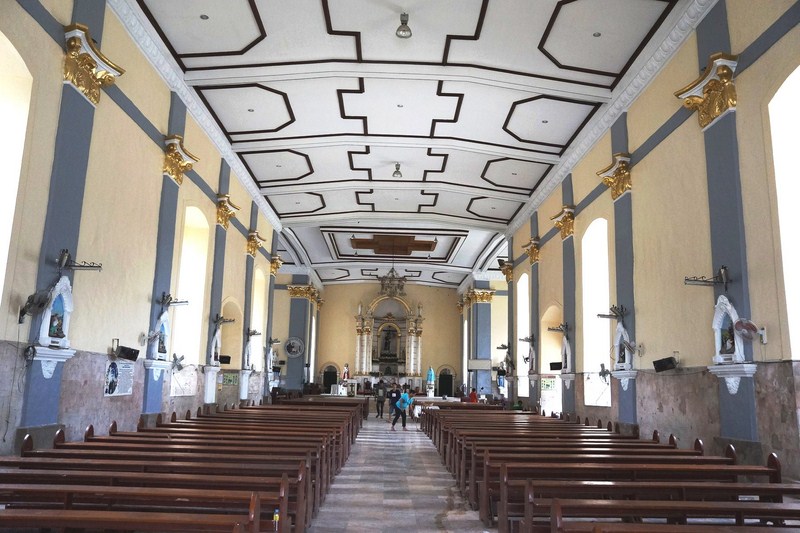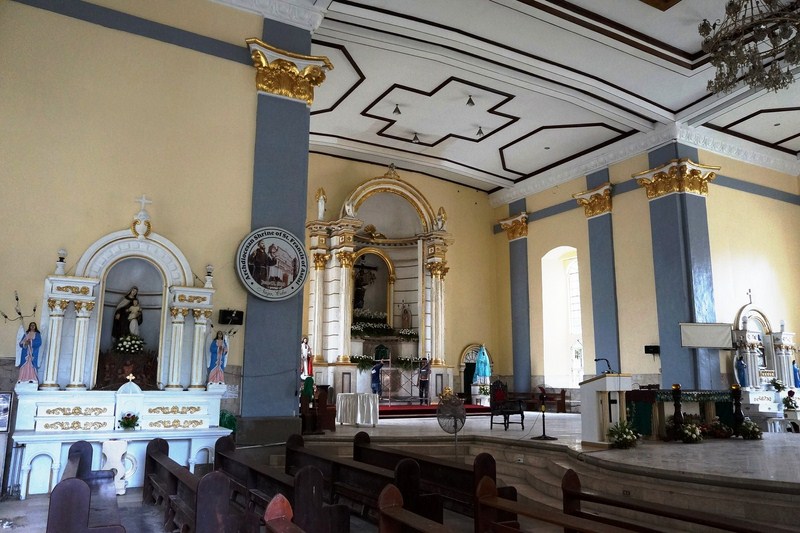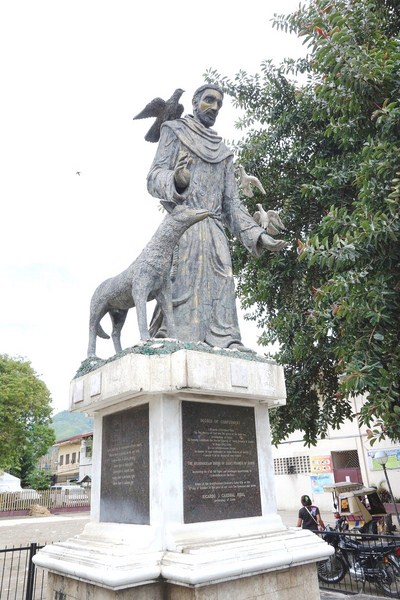Part of the Panglao Bluewater Resort-sponsored Tagbilaran City Tour
First built with forced labor by Jesuits in 1787, it was burned on December 23, 1798 (8 PM) and reconstructed and enlarged from 1839 to 1855 by Fr. Valero de San Sebastian. Between 1888 and 1894, Fr. Escolastico Enciso made improvements by sumptuously painting it and adding iron cornices, wooden flooring and chandeliers. In 1941, the church was made into a cathedral. Very little remains of its Spanish-era past.
Between 1945 and 1951, ill-conceived and deeply regretted renovations were initiated by Msgr. Julio Rosales (the first Bishop of the Diocese of Bohol and later Cardinal), assisted by the parish priest Fr. Arturo Tecson. The coral stone facing was totally replaced by cement, the antique wooden flooring was replaced by reinforced concrete and the original ceiling, featuring beautiful, centuries-old frescoes depicting catechetical themes and Biblical scenes found in many historic churches of Bohol, was totally changed and lost forever.
Between 1952 and 1970, the church façade and the choir loft were totally changed by Msgr. Manuel Mascarinas, with the assistance of parish priests Fr. Pedro Namoc and Fr. Camilo Auza. Major renovations were also done in the interior and exterior walling. To widen and enlarge the presbytery, massive stone walls were demolished so that the main altar can be moved back by 3 m. and additional wings (which forever altered its cross-shaped plan) were built to accommodate a fast-growing congregation.
Also, on May 1, 1996, as part of the Cathedral Expansion Project, a small obelisk in front of the church, erected in February 1828 and repaired on February 1949 was removed, replaced by a statue of St. Joseph the Worker. The church was slightly damaged during the strong October 15, 2013 earthquake.
The cathedral has a Neo-Romanesque facade with corbelled arches underneath the cornice, a porch over the main entrance and tall, semicircular arched windows. The Augustinian Recollect Order’s seal are carved on the doors, arches and cornices.
Inside are 20 venerated, wooden and historic images along the walls of the church. The main altar, elegantly decorated with ornate gold designs depicting symbols of Old Testament times, is in the 19th century Neo-Classical style.
At its center is the 18th century image of St. Joseph the Worker, with the image (dated 1848) of San Roque (St. Roch), the secondary patron, on the left, and that of St. Vincent Ferrer, dated 1861, on the right. Immediately above St. Joseph’s throne, on the main altar’s second storey, is the image of Nuestra Senora de Lourdes (Our Lady of Lourdes), said to have been donated in 1895 by Dona Maria de Bourbon of the Royal House of Spain, and installed, with great pomp, on February 19, 1895.
The 2-tiered side altars are of the 18th century Baroque style. The left wing retablo contains images of the Sacred Heart of Jesus (acquired in 1897) and 4 different devotions to the Blessed Virgin, the Mother of Jesus, and St. Therese of Liseuix, the Little Flower. On the right side altar are the Risen Christ, the Immaculate Heart of Mary (acquired in 1897), St. Anthony of Padua, and Our Lady of Perpetual Help.
The 4-storey bell tower (currently being repaired), with a dome roof and six bells (dating from 1891 to 1907), was started in 1886 by Fr. Jose Sanchez and finished and blessed in April 1891. The 2-storey convent, also destroyed in 1798, was enlarged and roofed with galvanized iron in 1872 by Fr. Lucas Coromina. It is now the bishop’s residence.
Cathedral of St. Joseph the Worker: J.A. Clarin cor. F. Sarmiento St., Tagbilaran City. Tel: (038) 411-2282 and (038) 411-3522. Feast of St. Joseph the Worker: May 1.
Bohol Tourism Office: Governor’s Mansion Compound, C.P.G. Ave. North, Tagbilaran City, 6300 Bohol. Tel: +63 38 501-9186. E-mail: inquire@boholtourismph.com.
Panglao Bluewater Resort: Bluewater Rd., Sitio Daurong, Brgy. Danao, Panglao, 6340 Bohol. Tel: (038) 416-0702 and (038) 416-0695 to 96. Fax: (038) 416-0697. Email: panglao@bluewater.com.ph. Website: www.bluewaterpanglao.com.ph. Manila sales office: Rm. 704, Cityland Herrera Tower, Rufino cor. Valera Sts., Salcedo Village, 1227 Makati City, Metro Manila. Tel: (632) 817-5751 and (632) 887-1348. Fax: (632) 893-5391.

